Shanghai, China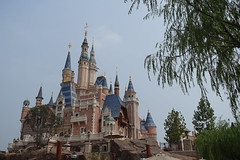
The iconic stature of Fantasyland can end up being a curse for designers. For some people, Fantasyland is a synecdoche for the entirety of Disneyland… it’s where all the princesses, fairy tales, and lovable animated characters live, after all. And the castle. That giant freaking castle that seems to be growing exponentially with each new park debut, no longer symbolizing the land behind it but the entire park around it. While the other lands allow the designers some leeway to get creative, Fantasyland is such an iconic landscape that carries the burden of such firmly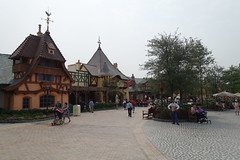 entrenched expectations that it can be hard to deviate from the standard blueprint too far in pursuit of more innovative design. And because that iconic landscape is mostly defined by the strength of its precedents, that means that Fantasyland is the one land that feels the least like a modern immersive theme park, and more like a traditional early-Disney themed amusement park. It’s always seemed somewhat odd that, despite being the park’s flagship land, it always seems to lack a truly flagship E-ticket attraction comparable to the headliners of adjacent lands. Even in 2016, it still follows the amusement park ethos of a diverse collection of mid-ticket attractions spread out over a nicely landscaped yet thematically
entrenched expectations that it can be hard to deviate from the standard blueprint too far in pursuit of more innovative design. And because that iconic landscape is mostly defined by the strength of its precedents, that means that Fantasyland is the one land that feels the least like a modern immersive theme park, and more like a traditional early-Disney themed amusement park. It’s always seemed somewhat odd that, despite being the park’s flagship land, it always seems to lack a truly flagship E-ticket attraction comparable to the headliners of adjacent lands. Even in 2016, it still follows the amusement park ethos of a diverse collection of mid-ticket attractions spread out over a nicely landscaped yet thematically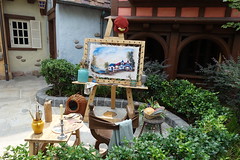 unambitious (and slightly unfocused) environment. It would almost be charming, if only Shanghai Disneyland wasn’t a park that has utterly abandoned charm in its pursuit of grand spectacle. As such, it’s probably the one land in Shanghai Disneyland that never quite gels the way it’s supposed to.
unambitious (and slightly unfocused) environment. It would almost be charming, if only Shanghai Disneyland wasn’t a park that has utterly abandoned charm in its pursuit of grand spectacle. As such, it’s probably the one land in Shanghai Disneyland that never quite gels the way it’s supposed to.
It’s not for lack of effort. Moving Dumbo and the Fantasia Carousel out into their own separate zone makes a tremendous amount of design sense now that spinning flat rides have basically been banished from the vocabulary of top-tier immersive themed environments. Enchanted Storybook Castle is a legitimate attempt to finally make this oversized piece of placemaking into the multi-experiential attraction it’s always wanted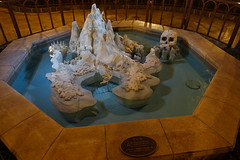 to be. And individual attractions, whether based on beloved originals such as Peter Pan’s Flight or inspired by new concepts, such as Seven Dwarfs Mine Train, show an ambition to further push the land’s biggest attractions closer to that revered E-ticket designation.
to be. And individual attractions, whether based on beloved originals such as Peter Pan’s Flight or inspired by new concepts, such as Seven Dwarfs Mine Train, show an ambition to further push the land’s biggest attractions closer to that revered E-ticket designation.
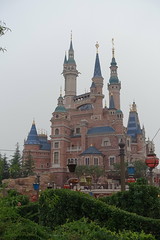 Let’s start with the Enchanted Storybook Castle. As mentioned in the introduction, the castles have always been the nexus of Disney theme parks, but the nearly 200 foot tall Enchanted Storybook Castle has become a gravitational black hole. The biggest, but not necessarily the best; it lacks a sense of authentic architectural design and instead is rather easily identifiable as a giant show box affixed with some elaborate facades. That’s because it’s the first castle to fully program out its interior in a way that’s more than just a “discovery moment” for those willing to explore off the main pathway. Instead you get one big “wow moment” by stepping into the central atrium and standing in stunned disbelief at the towering volume above you, a seemingly too-delicate chandelier suspended in the middle of this grand void. As stunning as this moment is, it’s also fleeting, as once we’re done looking up we’re quickly looking around for signs of where to move next.
Let’s start with the Enchanted Storybook Castle. As mentioned in the introduction, the castles have always been the nexus of Disney theme parks, but the nearly 200 foot tall Enchanted Storybook Castle has become a gravitational black hole. The biggest, but not necessarily the best; it lacks a sense of authentic architectural design and instead is rather easily identifiable as a giant show box affixed with some elaborate facades. That’s because it’s the first castle to fully program out its interior in a way that’s more than just a “discovery moment” for those willing to explore off the main pathway. Instead you get one big “wow moment” by stepping into the central atrium and standing in stunned disbelief at the towering volume above you, a seemingly too-delicate chandelier suspended in the middle of this grand void. As stunning as this moment is, it’s also fleeting, as once we’re done looking up we’re quickly looking around for signs of where to move next.
Surrounding us on all four sides in the central atrium are four quite lovely mosaics representing the four seasons by way of The Princess & The Frog (spring), Tangled (summer), Brave (autumn), and of course Frozen (winter).1 From a distance these might look like fairly standard marketing art for a collection of (all recent) Disney princess movies, but on closer inspection the detail and craftsmanship is genuinely impressive. Wish I had close-up photos of all four, but they were popular selfie opportunities with the locals.
Off to either side is the Royal Banquet Hall and the Bibbidi Bobbidi Boutique, checking off the necessary dining and retail element. Beneath the castle is the finale for the Voyage to the Crystal Grotto boat ride, but because the loading platform is some distance away it’s a bit of a stretch to call it one of the castle’s attractions.
The main attraction is the “Once Upon a Time” Adventure, which occupies much of the upper levels of the castle and where the entrance can be found in the rear of the building. The attraction failed to open with the rest of the park’s grand opening but was online a few months later. As such, this was the one attraction in the park that I missed virtually all word of mouth prior to my visit and had vanishingly little idea of what it actually was, but as I waited in the 40 minute (!) queue I had plenty of time to form hypotheses and expectations that this would be something akin to Enchanted Tales with Belle in Florida, which has a mind-blowing magic mirror effect that I had been eager to witness in person.
We begin by pulsing groups of 15 or so into this small chamber, where an open book with mapped projection and Pepper’s ghost effects begins the story promisingly, if not a little ambiguously for non-Chinese speakers.
Then we march up a long-ass and totally not-ADA-compliant stairway to reach the main level of the attraction. While the views of the atrium are impressive on the stairway, once inside the attraction completely abandons any sense of relationship to the interior or exterior architecture and becomes just another walk-through in a black box. The adventure begins.
So the mind-blowing magic mirror effect here apparently got value engineered into a door that slides away when they turn the lights down. Erm, okay. On the other side, I wasn’t expecting Snow White from the entrance, but sure, I’ll take it. The juxtaposition of old-school animation clips from 1937 with the rest of the modern environments was oddly delightful.
The clear issue seen in all of these videos (I’ll summarize here since I’m sure no one’s going to watch them all the way through) is that no one knows how they’re supposed to move through this attraction. The entire scenes consist of a simple song with embedded media, which after several seconds begins to feel like it’s supposed to be exit music encouraging us to move into the next room… which, absent a facilitator, is exactly what everyone did before we realized that no, this literally is the entire experience.
Later scenes add a bit more complexity and interest to the proceedings, but they’re still all basically “watch this embedded animation media as we play this entire song.” We’ve all been there, Disney; no matter how cool you think your music is, when you try to make other people listen to it the whole way through, they’re always going to get restless and ignore the best parts.
Of course there has to be a Happily Ever After moment (with embedded fiber optics) at the end.
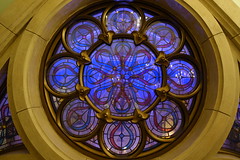 Aaaaand… that’s it. About 50% too long with 50% too little content, the “Once Upon a Time” Adventure is a potentially decent walk-through attraction that fell victim to attempts to make it a higher ticket attraction than it really is. If it had borrowed more from Disneyland’s Sleeping Beauty castle walk-through, making it free flowing (eliminating the queue that sets expectations high and patience thin) and allowed the scenes to loop instead of pulse (allowing guests to linger as long or as briefly as they like), they might have ended up with something I could recommend in more instances than just for Disney attraction completionists or if the line is nearly non-existent.
Aaaaand… that’s it. About 50% too long with 50% too little content, the “Once Upon a Time” Adventure is a potentially decent walk-through attraction that fell victim to attempts to make it a higher ticket attraction than it really is. If it had borrowed more from Disneyland’s Sleeping Beauty castle walk-through, making it free flowing (eliminating the queue that sets expectations high and patience thin) and allowed the scenes to loop instead of pulse (allowing guests to linger as long or as briefly as they like), they might have ended up with something I could recommend in more instances than just for Disney attraction completionists or if the line is nearly non-existent.
Moving clockwise around the Fantasyland loop we first encounter Voyage to the Crystal Grotto, a sort of next-generation take on the Storybook Land Canal Boats at Disneyland.
Unlike Disneyland, Shanghai allocates tons of space for broad queues that rarely seem to be used.
There’s something of a story tying together this attraction that’s otherwise an IP mashup.
We ride in these large, Jungle Cruise-style boats with hard canopies equipped with an incongruous-looking retractable roof, somewhat disrupting the quaint aesthetic it’s going for.
Away we go. Some recorded narration (in Mandarin) apparently sets the mission and backstory here, but afterward the entire attraction is completely sans commentary until the very end.
We ride past large scale sculptural scenes of popular Disney movies with music and dancing fountains, starting with Beauty and the Beast.
Like “Once Upon a Time” Adventure, this one had us wondering if something, anything was going to happen before moving on. It never does. At least this time we were on an attraction vehicle and couldn’t accidentally skip ahead to the next scene too early.
Next up, Aladdin.
Again, none of these characters are animated. And they’re so large, they’re completely lacking in any charm.
I did notice the uniquely delicate painted patterns on the characters, which at first I thought might have been some Chinese artistic element. But I’ve later learned that, no, they in fact were just painted that way in an effort to make these scenes slightly more interesting.
Another case of putting (attempted) spectacle before story or feeling in Shanghai Disneyland.
Next up: Topiaries!
Because: Reasons!
Mickey’s Sorcerer’s Apprentice scene at least had a rotating Mickey figure and water features that are kind of relevant to the story.
Tangled!
Okay, so we’re back to absolutely nothing happening in this scene. I’m told this scene has some good effects at night, but given my limited time over two days I wasn’t intending to find out for myself.
Mulan!
Mulan definitely gets a much greater presence in this park than she does at any other Disney theme park, for reasons that should be obvious.
Little Mermaid!
Or, as the Chinese know this scene by: Seafood!
Seriously, because one of Shanghai’s most famous dishes involves crayfish, which I’m sure nearly everyone traveling domestically to Shanghai Disneyland will associate this scene with.
Up until this point we’ve basically been in a water parade where we move and the floats stay stationary. But there’s a grand finale behind these doors you won’t believe!
It’s dark in here…
That’s right, it’s… more gushing water!
And mapped projection diarrhea everywhere!
Shit. I think I see some undigested bits of story in it.
Oh! Now I get it! It was the crystal all along! Who woulda thought?
And the moral of the story is… you better start learning Chinese.
We end the experience by waiting to advance to the unload platform next to these… actually kind of lovely murals. Perhaps the best part of the entire ride?
Sarcasm aside, Voyage to the Crystal Grotto is undoubtedly the weakest link in Shanghai Disneyland. While it’s not actively unpleasant in the way Stitch Encounter at the Magic Kingdom can be (still my vote for worst Disney attraction in the world), the biggest challenge it presents is that it takes up way too much space. Sitting in the middle of Fantasyland, it forces the rest of the land to be laid out like a giant donut with virtually no programming on the inner ring, loosing critical density and thus energy throughout the entire land. If I were to pick a candidate attraction for early replacement, this would be it.
Around the corner is Peter Pan’s Flight.
Like the rest of Fantasyland, a lot of the space allocation goes to these oversized queuing structures that aren’t really themed as anything.
Again, Fantasyland’s low-density layout means that show buildings sit out in the open, only lightly themed enough to resemble a Universal Studios attraction.
Inside features this nice mural on which you can occasionally see Tinkerbell fly across.
The loading platform, featuring drop ceilings and ceiling fans.
One big improvement are the four-passenger vehicles that greatly aid capacity.
We begin through the bedroom, meeting the main characters, before flying up and over a miniature London and through the stars to Neverland.
The ride itself is… really good. In fact, I’d probably rate it my favorite version of the Peter Pan attractions.
To be fair, Peter Pan is usually one of my least favorite of the Fantasyland dark rides. Too short, and while the initial flight sequence is a delight, the second half becomes a confusing muddle of non-sequiturs for those only vaguely familiar with the movie, like me.
So, if I’m getting the story right, a misbehaving flying child encourages other children to break out from their home at night, travel to an island of offensive native stereotypes, where they promptly assault and murder a physically disabled man?
But this version of Peter Pan’s Flight finally fixes the confusion in the second half; various projection effects such as water splashing against the rocks when we “land” or Peter Pan flying between scenes to establish continuity help the story stand without relying on our familiarity with the source material.
In fact, this is probably the best recent example of Disney Imagineers finding ways to modernize and improve upon a classic attraction without compromising the spirit of the original.
Very well done, possibly the best attraction in Fantasyland.
The back loop of the park features no major attractions, but some shows (like a Frozen sing-along, ugh), and food outlets, like the Tangled Tree Tavern. All based on modern Disney films.
We eventually arrive on the other side of Fantasyland in this 100 Acre Woods sub-land. It’s not particularly elaborate or immersive.
Hunny Pot Spin is a Winnie the Pooh-inspired replacement for the traditional Mad Hatter’s Tea Party attraction in Fantasyland.
Looks cute and fun. Didn’t ride.
The marquee attraction of this mini-area is The Many Adventures of Winnie the Pooh dark ride.
Large outdoor queues with minimal themed integration are a recurring theme in Shanghai Fantasyland.
The indoor loading platform. Yikes.
Is this the ugliest, most half-assed loading platform ever in a Disney theme park? Where to begin? The big ugly industrial drop ceilings in clear view? The flat white office lighting? The visually distorted flat “page” panels held up by thick dark columns? The generic “prison bar” queue rails? The painted drywall everywhere? Or the fact that, while technically a similar design as Florida’s or Hong Kong’s, in this case it’s all made 100% worse by how oversized this entire room is?
Hunny Pot vehicles. Also same as Florida or Hong Kong.
Admittedly, it’s kind of amusing to see the very British literary style of A. A. Milne rendered in Chinese lettering.
Getting on the ride I was fearing the worst and… it’s actually not terrible. Apart from the Mandarin narration, it’s virtually the same as Hong Kong Disneyland’s version, which is to say it’s at least better than California’s.
I also love the fact that Disney’s one acid trip dark ride (that I’d argue can easily be reinterpreted as a parable for drug addiction) is now one of the most prolific of Disney’s dark rides, appearing at all but one Disney resort in the world.2
Hooray! Pooh continues to feed his honey addiction.
The end.
I had to come to the conclusion that the budget got eaten up by the ride, with the station area getting value engineered into oblivion. Right here you can see what must have been the exact line where the scope of work covered under the attraction’s budget ends, and is picked up by the much healthier budget for the gift shop on the other side.
Surprise! The gift shop is actually somewhat cute and charming, and completely different in style from the ride platform it’s attached to.
We got Fast Passes for several rides in Fantasyland. Note that when you go to use your FastPass, the staff will also require you to show your admission ticket so they can compare the tiny serial numbers in the bottom corner to make sure the right FastPass is paired with the right ticket. It’s as tedious as it sounds. Apparently FastPass scalpers are already a big problem in Shanghai Disneyland.
Next up: Seven Dwarfs Mine Train.
I’ve yet to experience the version in Orlando, so I was curious to try this version, which to my knowledge is essentially identical.
The station area is well done, with perhaps the only immersively themed queue in all of Fantasyland.
Seven Dwarfs Mine Train features “above the rail” suspended vehicle design, marking a new take on an old form that’s been absent for well over a decade. The detail work in the faux wood vehicles is gorgeous.
It’s too bad that the coaster itself, also delivered by Vekoma with heavy Imagineering influence, is something of a non-event. Apparently the swinging vehicles are inadequately engineered to withstand almost no lateral force; as such, the track is banked to ensure the cars swing as little as possible, basically only due to whatever speed difference there is around a curve between the front and back of the train. This caution against lateral force spills out into other aspects of the coaster design, creating an all-around limp handshake of a ride, even by Disney family coaster standards. I’d suspect the majority of riders won’t even be aware of the swinging dynamic unless they’re told to look for it.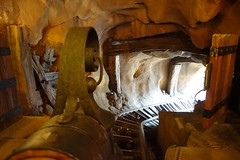
The ride is divided into three segments: the first small gravity coaster segment hidden on the back side of the ride, an indoor dark ride segment with the second larger lift hill, and the final gravity coaster segment where the iconic “big” drop and bridge segment happen. The dark ride segment is easily the standout, featuring seven quality audio-animatronic dwarf figures (at a time when it seems most new attractions save their budget for just one or two big figures) in a charming, lustrous mine setting. While not exactly a story, there’s enough progression and variation within this (still too-short) sequence to still provide some light structure to a scene that easily could have the same theme song and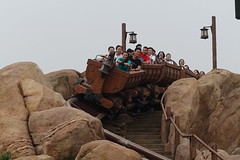 random action slathered over it from beginning to end. The final coaster segment marginally improves on the first, but just when it seems to get going with a fun little double S-bend,
random action slathered over it from beginning to end. The final coaster segment marginally improves on the first, but just when it seems to get going with a fun little double S-bend,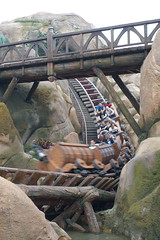 you run into the brakes. The brake run features just a simple landscape cottage scene instead of the more detailed version featured in the Magic Kingdom with the Evil Queen.3 Overall it’s not a bad ride, some parts are even quite good, but it does seem to represent a failure to fully execute on the original vision.
you run into the brakes. The brake run features just a simple landscape cottage scene instead of the more detailed version featured in the Magic Kingdom with the Evil Queen.3 Overall it’s not a bad ride, some parts are even quite good, but it does seem to represent a failure to fully execute on the original vision.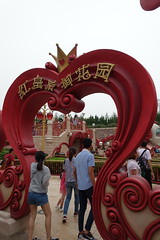
Lastly, Fantasyland features the Alice in Wonderland Maze, the second such maze attraction at a Disney park after Paris, although the first advertised to be base on the live action Tim Burton version of the movie. When this was first announced, I’m sure I’m not the only one who felt this signaled a big red flag, as the Burton Wonderland film is decidedly more… challenged than the animated original. Burton’s singularly idiosyncratic aesthetic mixed with recognizable actors (who will presumably all age much faster than the attraction itself) seemed like a poor fit for Fantasyland, a shortsighted synergistic ploy attempting to force Disney’s new obsession with live action remakes into relevance, all with little regard for what would actually make a lasting and quality guest experience. The last thing I need on any attraction is more of Johnny Depp’s countenance, let alone on two separate attractions right next to each other in the same park.
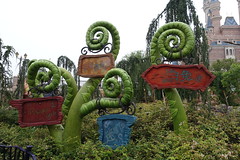 If that was an imagined worse-case scenario, the actual maze probably turned into as close to a best-case experience as I could have expected. Both the movie’s fussy CGI photorealism and likenesses to the live actors have been reduced back into simple and effective animated forms, which are then physically expressed with an aesthetic that fits comfortably within Fantasyland while updating it to something slightly darker, more detailed, and more mature than the loopy pastel phantasmagorias of the existing Alice attractions. Most importantly, the maze offers some moments of intimacy and discovery that are otherwise sorely lacking across the rest of Fantasyland. Let’s take a tour.
If that was an imagined worse-case scenario, the actual maze probably turned into as close to a best-case experience as I could have expected. Both the movie’s fussy CGI photorealism and likenesses to the live actors have been reduced back into simple and effective animated forms, which are then physically expressed with an aesthetic that fits comfortably within Fantasyland while updating it to something slightly darker, more detailed, and more mature than the loopy pastel phantasmagorias of the existing Alice attractions. Most importantly, the maze offers some moments of intimacy and discovery that are otherwise sorely lacking across the rest of Fantasyland. Let’s take a tour.
The maze begins with these illustrative panels that introduce guests to the story of Alice in Wonderland, as the story is admittedly much more convoluted than the average Fantasyland fairy tale.
Next, we step through one of these three doors. I’m unsure of the story significance of this; apparently they open different doors at different hours or days, but they all almost immediately re-merge on the other side.
Walking deeper into the maze, the Enchanted Storybook Castle does somewhat spoil the sense of disorientation and immersion into the maze. At least it looks impressive.
Freaky faced flowers:
Steampunk animal oddities. (I don’t remember these from the movie, but nevertheless they look cool.)
Into the cave that cuts under one of the park’s main thoroughfares:
A Cheshire Cat illusion appears and vanishes here, just barely still visible. Tried to wait to get another photo, but he proved more illusive than I imagined, so I moved on.
Emerging on the other side into the much more open and angularly structured courtyard of the Queen of Hearts. I appreciate that this maze contains very distinctive environmental zones.
Of course, (especially being in China) this entire maze is basically one giant selfie festival, even with makeshift queues forming for the most popular photo locations. The Queen of Heart’s bulbous head is nearly impossible to get a photo of without someone throwing a V-sign in front of it, but even things like a particularly elaborate fencing detail are likely to attract some poses.
Finally we get to the hedge maze itself, which offers a choice to go left to get lost, or go right for a shortcut to the Mad Hatter’s tea party. As there are few selfie opportunities in this maze, the vast majority of participants chose to go right. The entire maze was a ghost town.
It’s not hard. You pretty much have to will yourself to get lost in here.
Finally, at the end is the Mad Hatter’s tea party, featuring a delicious spread (non-edible, yet filled with small interactives) and of course more selfie opportunities!
While far from groundbreaking, the Alice in Wonderland Maze was overall still a compelling experience, one that I’d rate highly among the park’s attractions and even among Fantasyland attractions globally. Of the six significant Shanghai Fantasyland attractions, there seemed to be a pretty even breakdown in quality, with two needing a lot of work (Once Upon a Time and Crystal Grotto), two being basically competent if somewhat uninspired (Winnie the Pooh and Seven Dwarfs), and two that well exceeded my expectations (Peter Pan and Alice). It’s clear that Fantasyland has gobs of space for expansion in Shanghai Disneyland; the question is now if they can use that potential to elevate the entirety of the land.
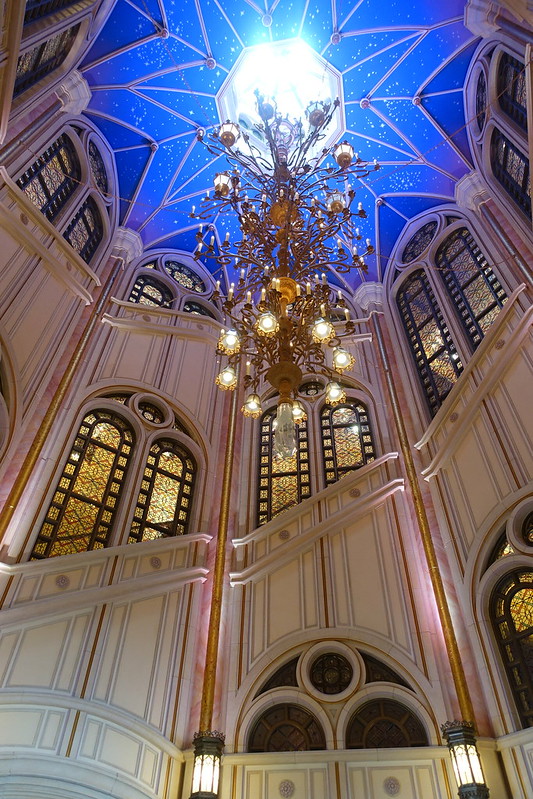
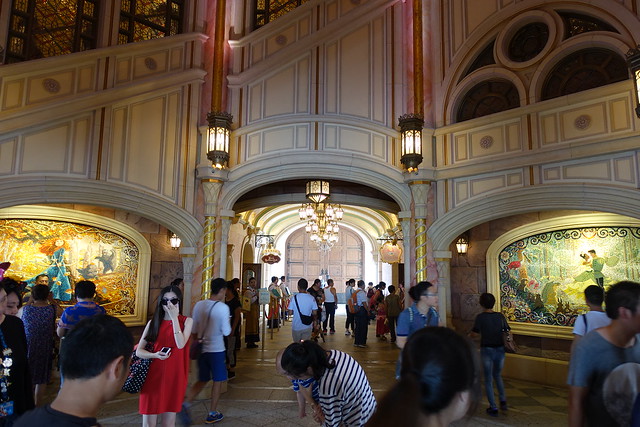
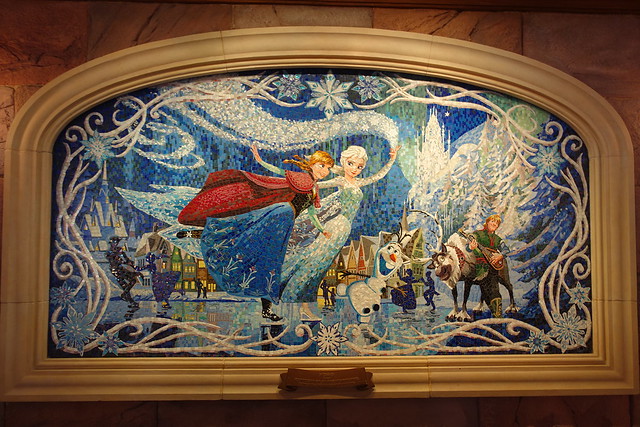

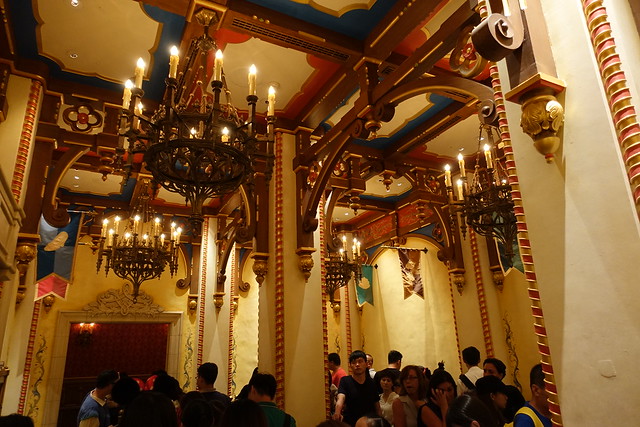
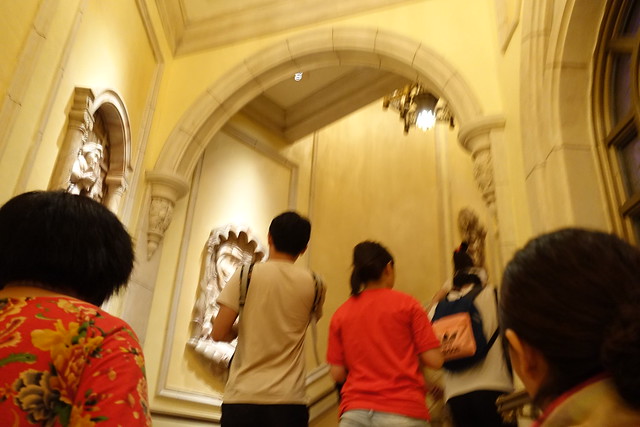
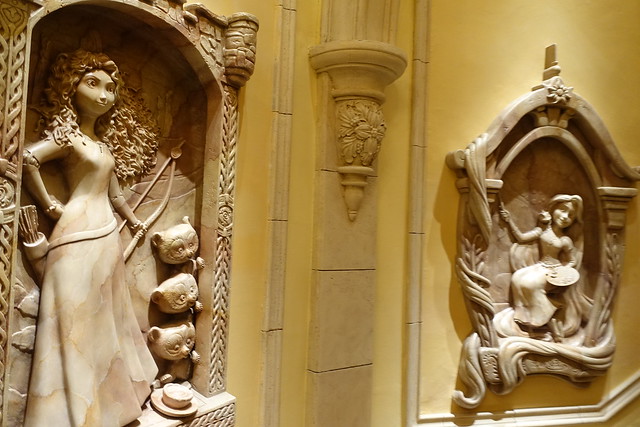
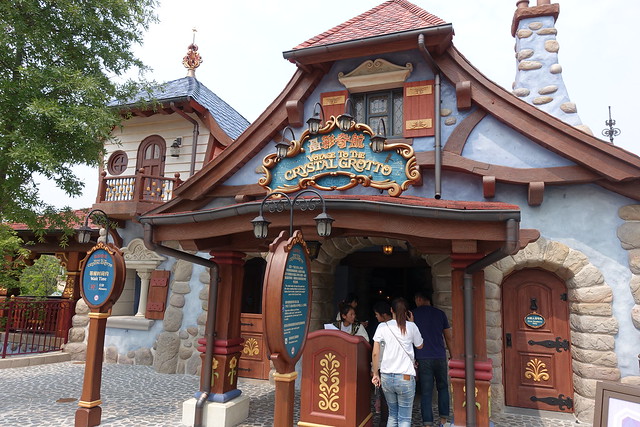
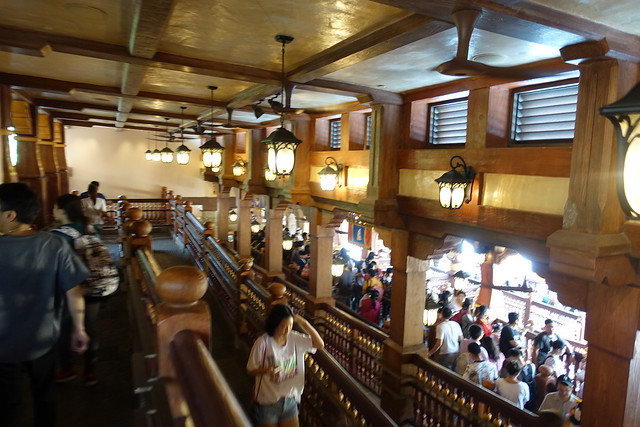
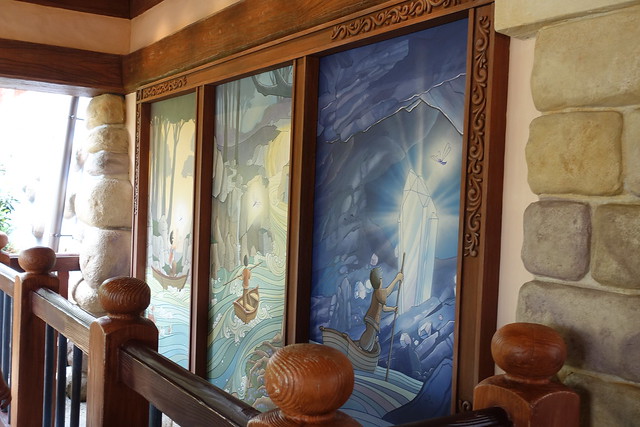
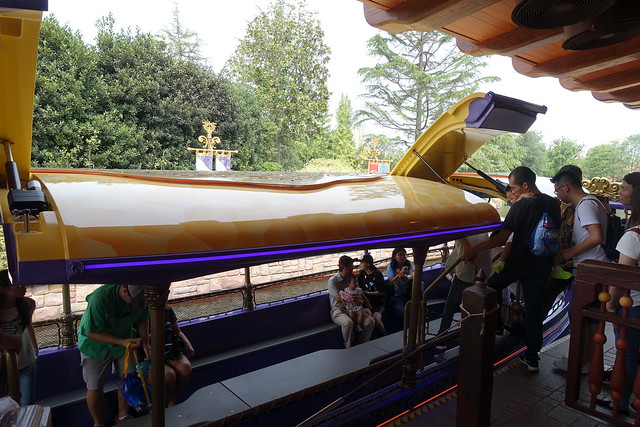
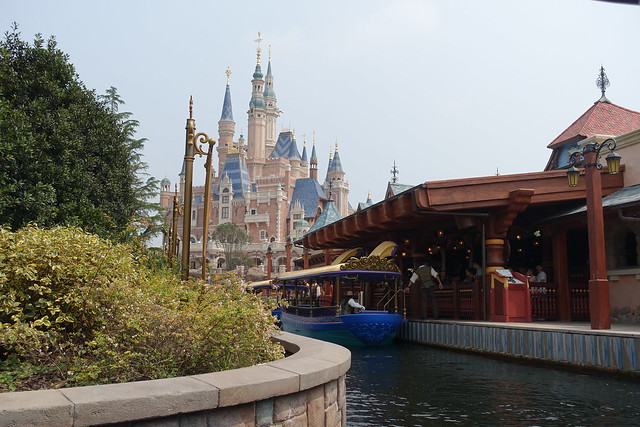
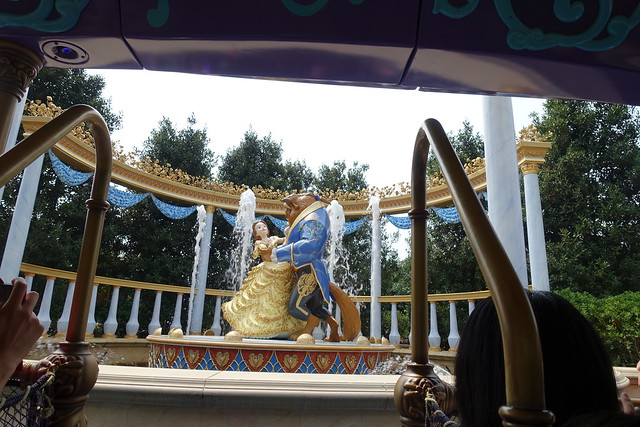
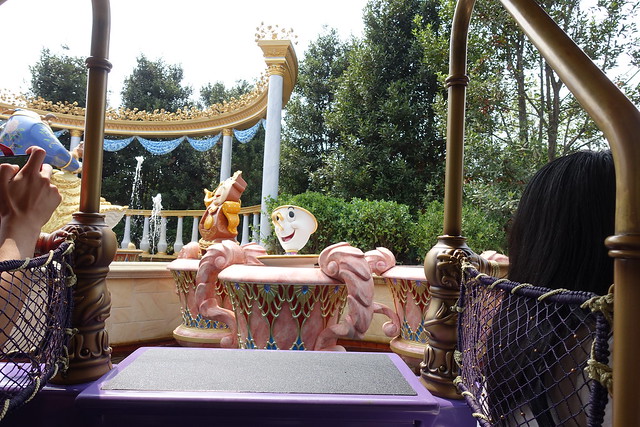
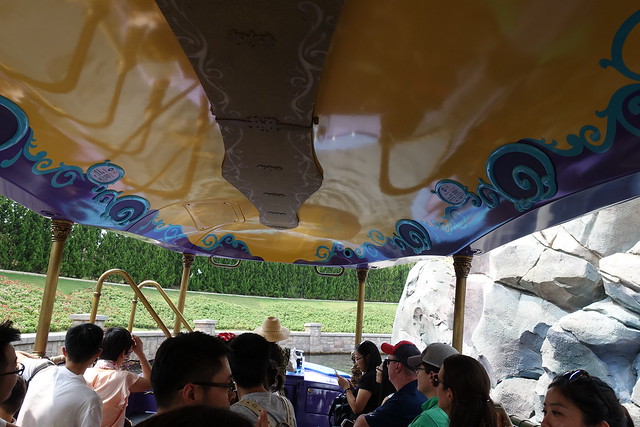
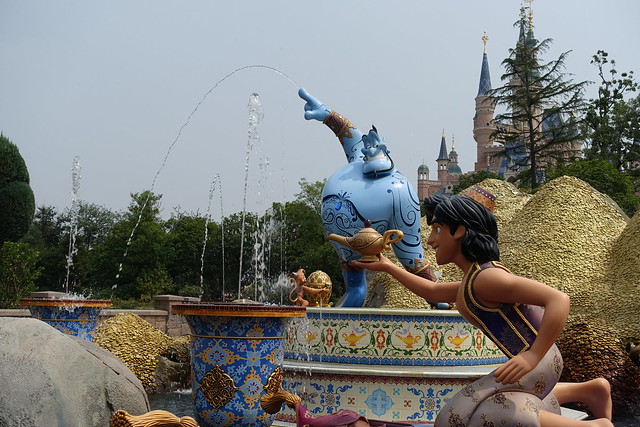
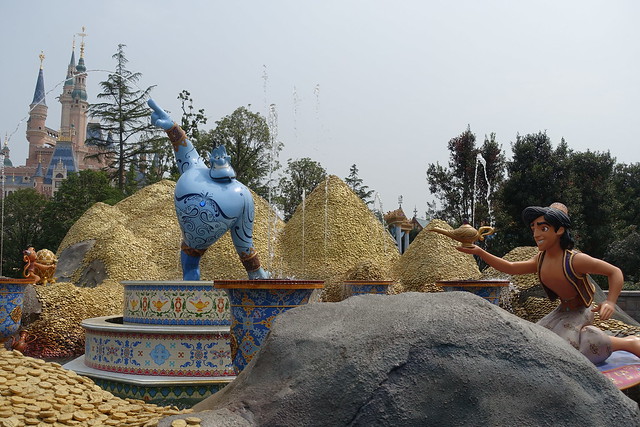
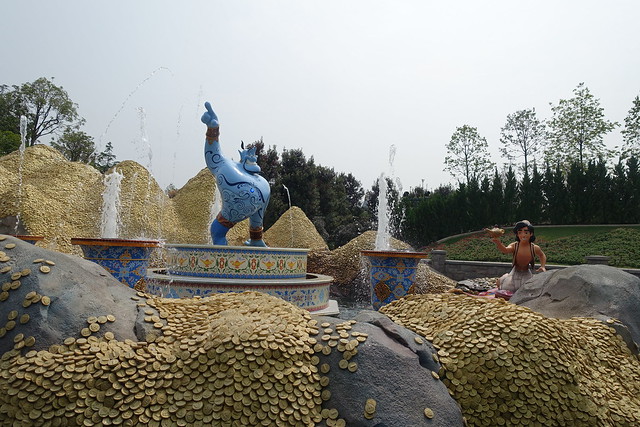
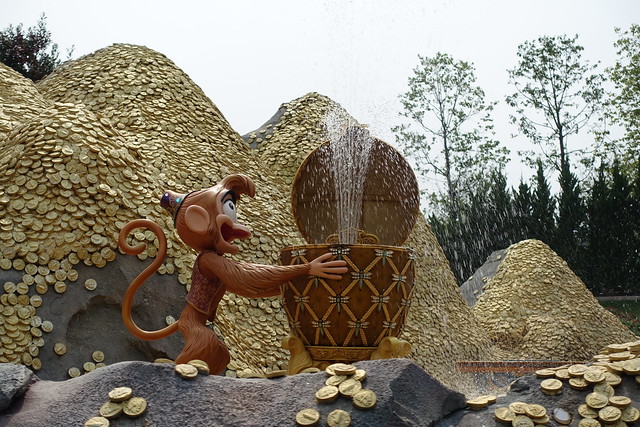
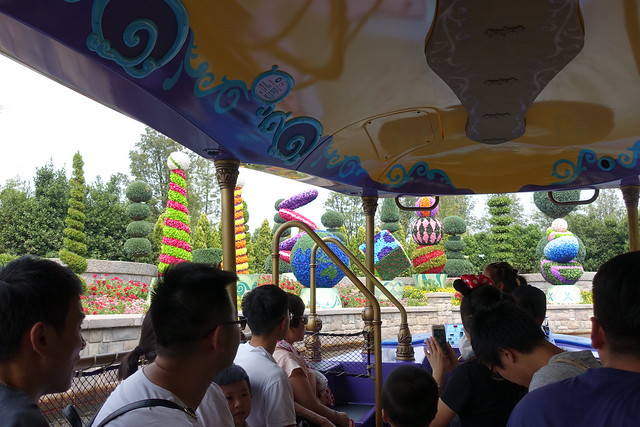
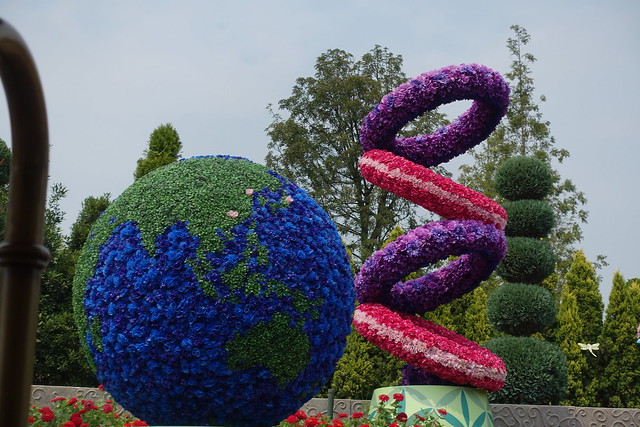
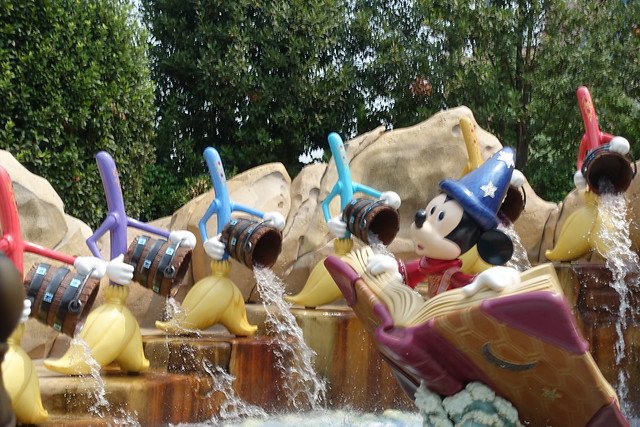
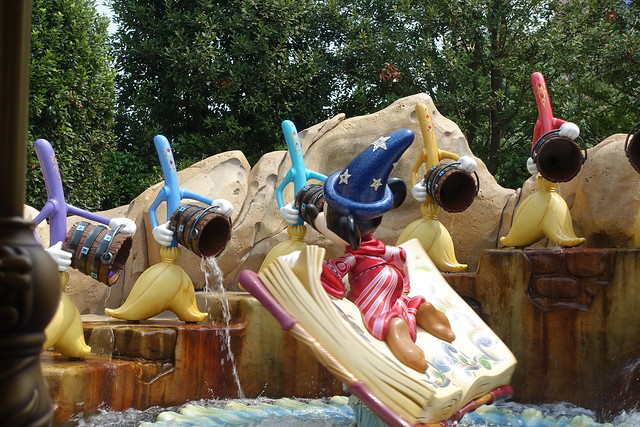
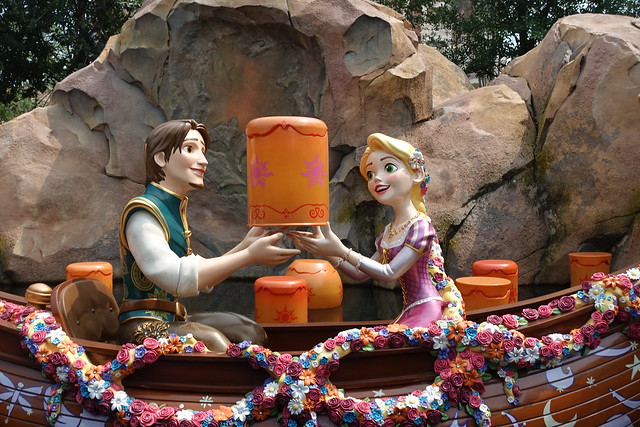
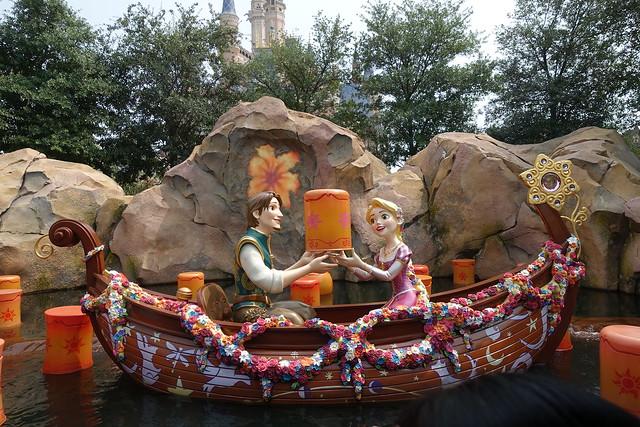
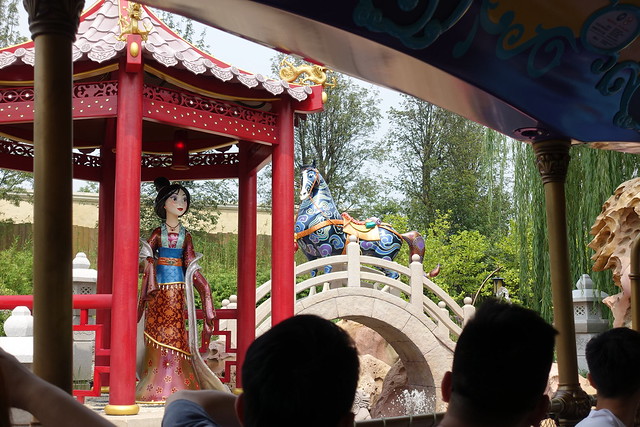
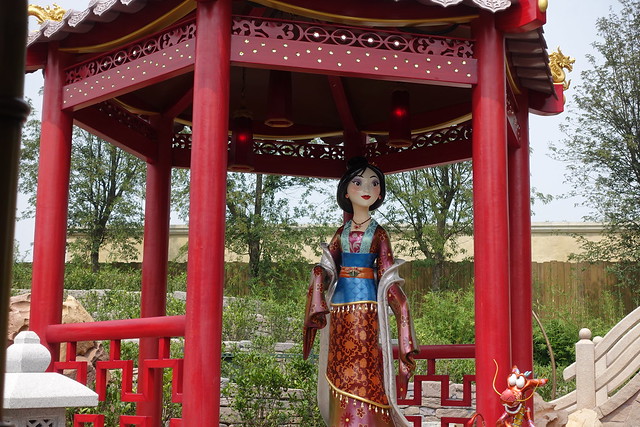
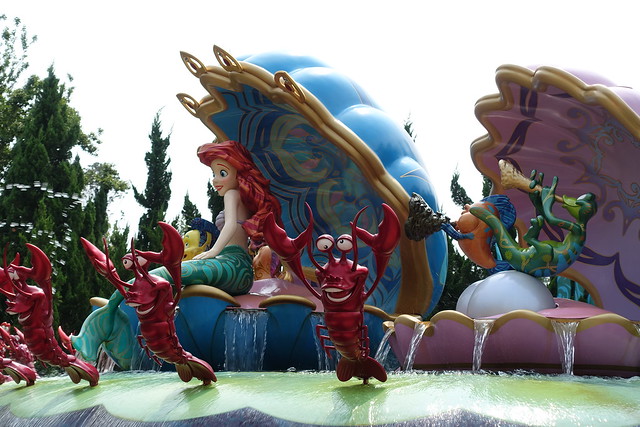
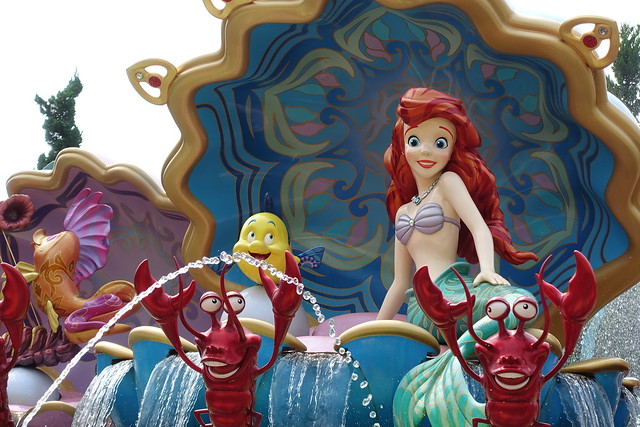
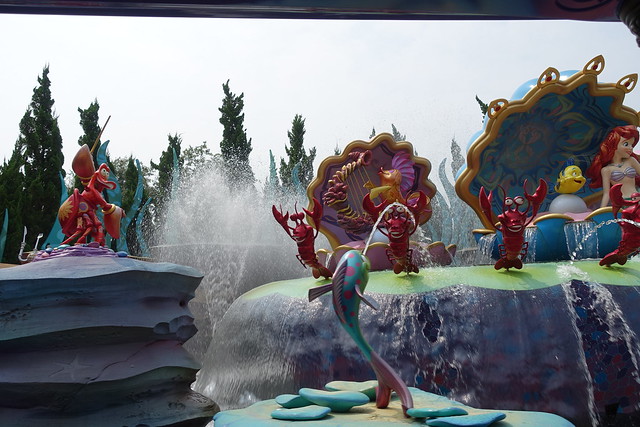
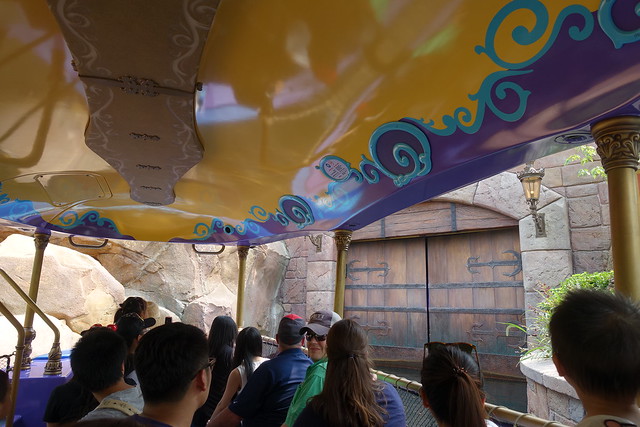
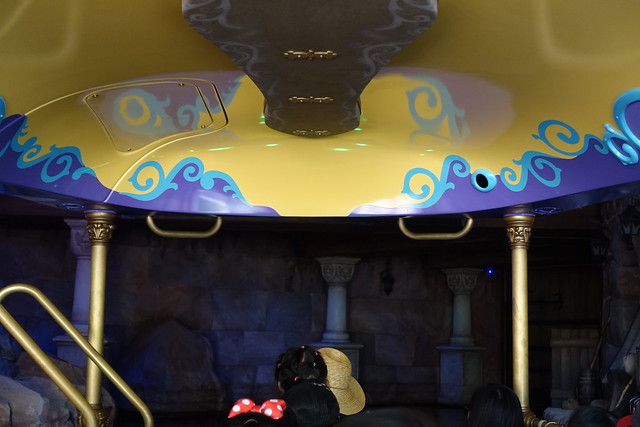
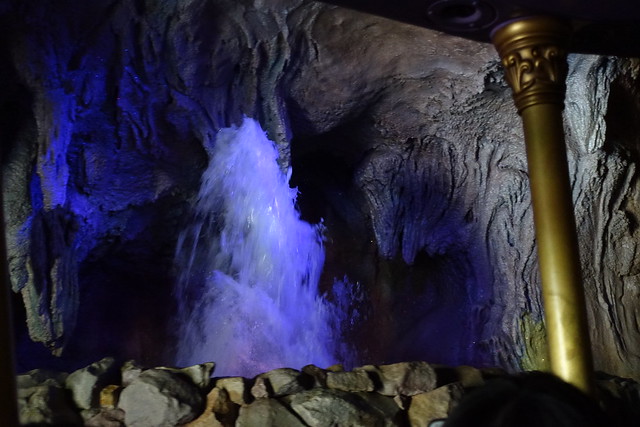
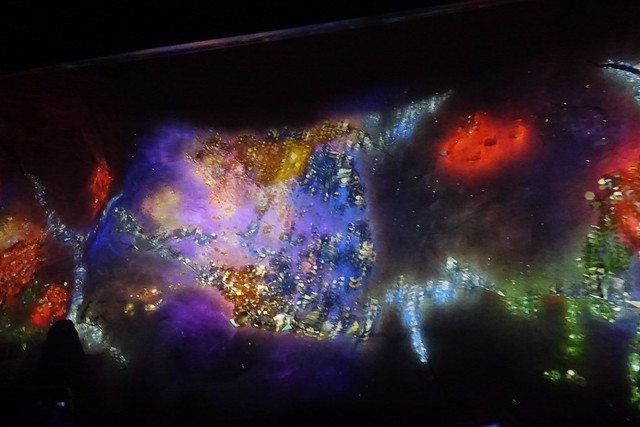
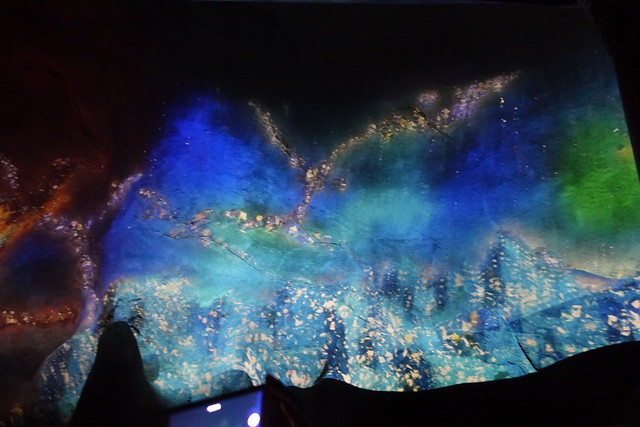
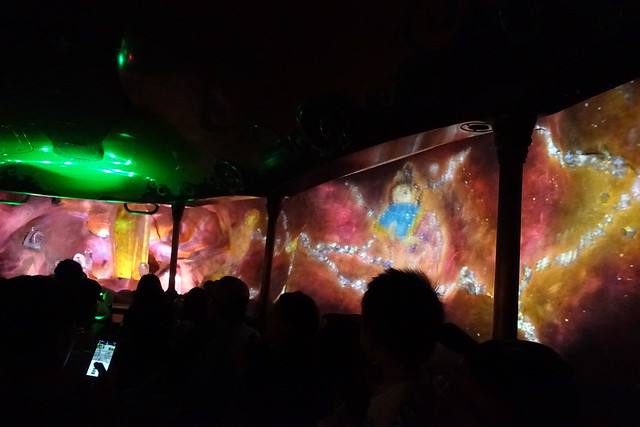
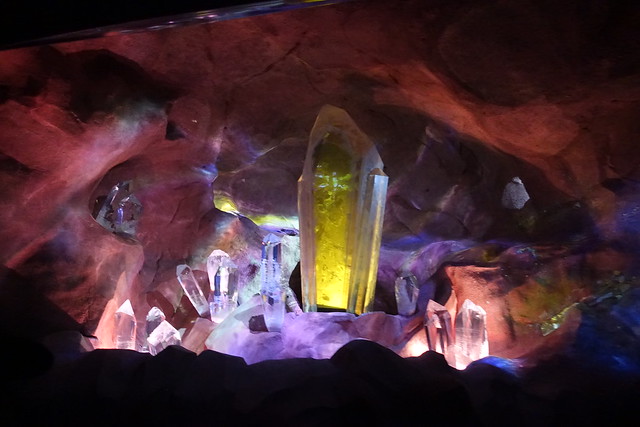
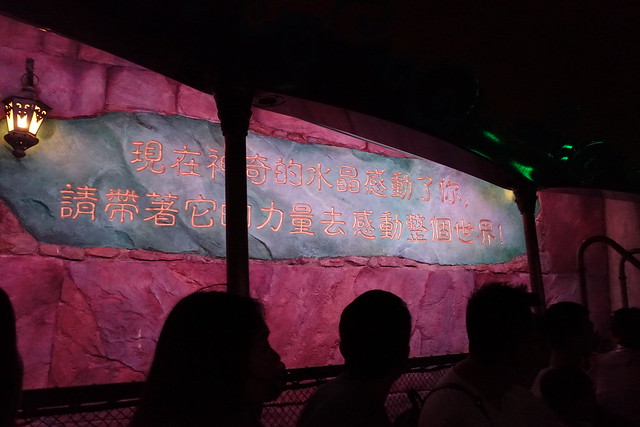
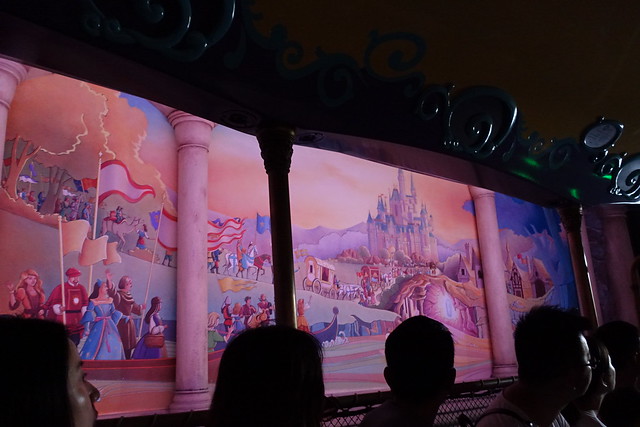

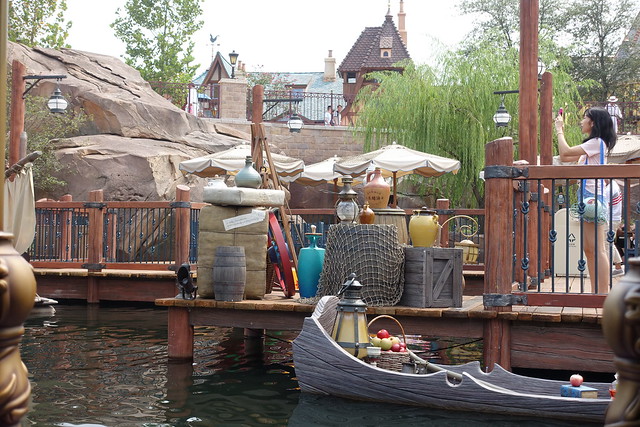
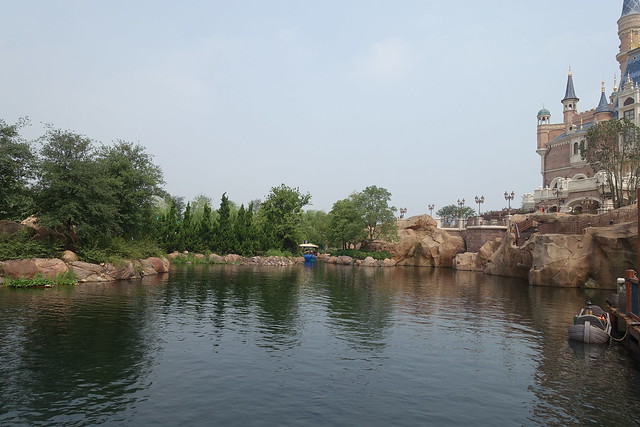
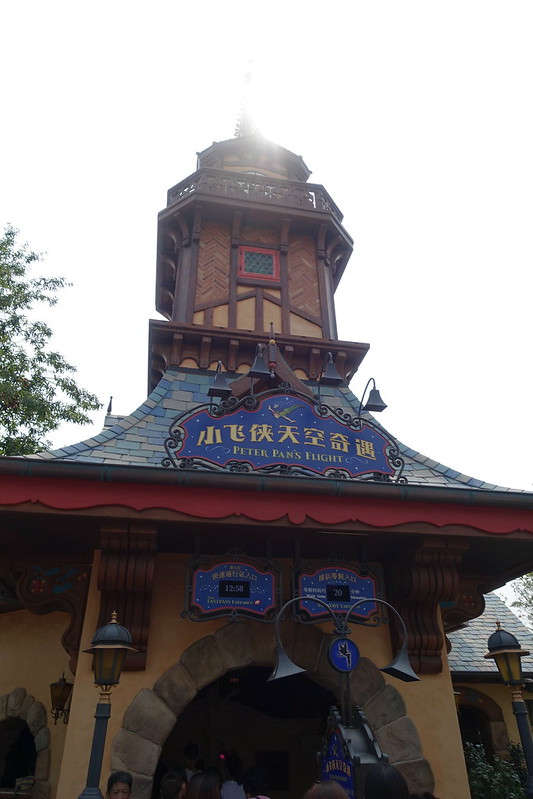
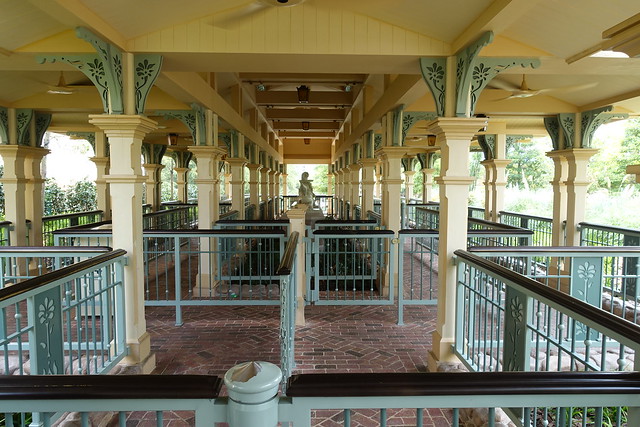
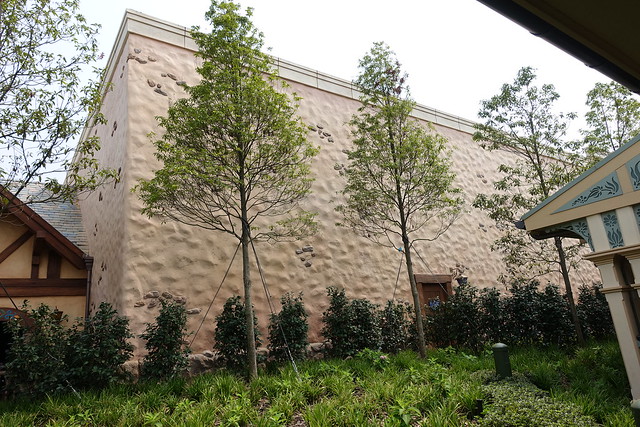
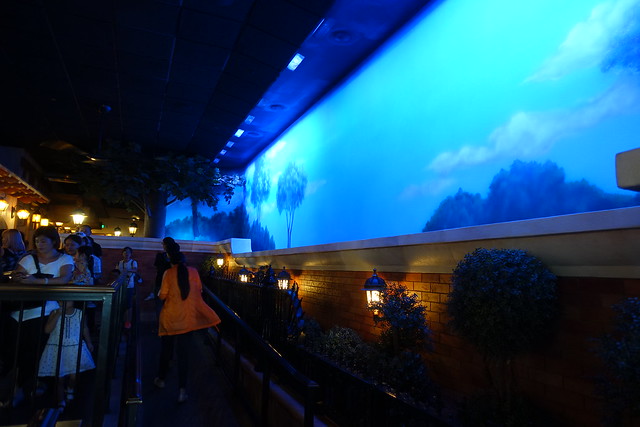

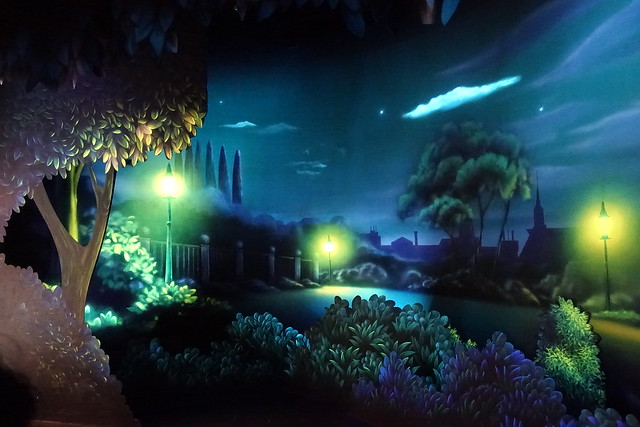
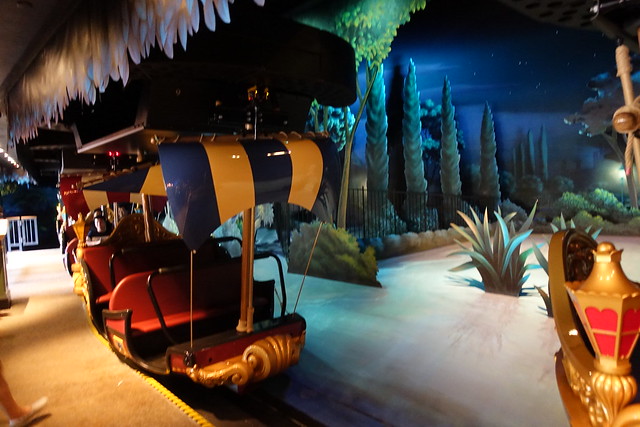
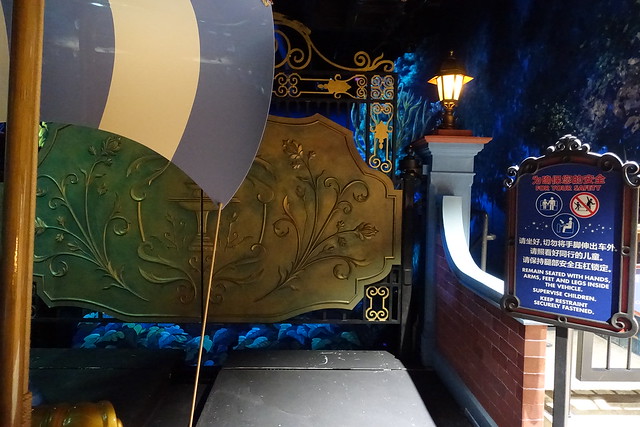
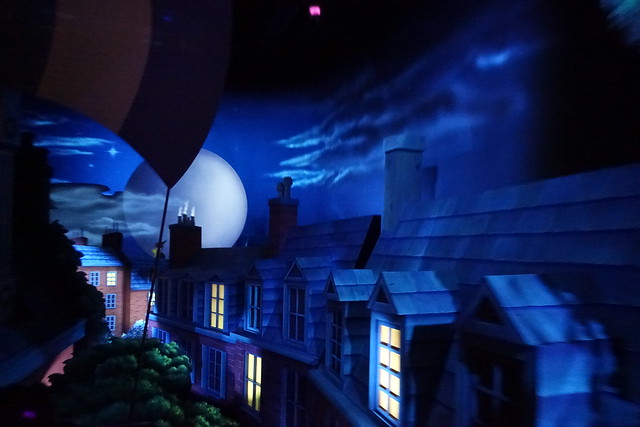
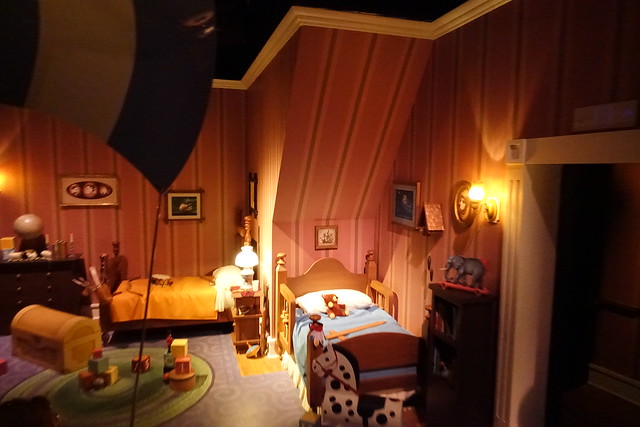
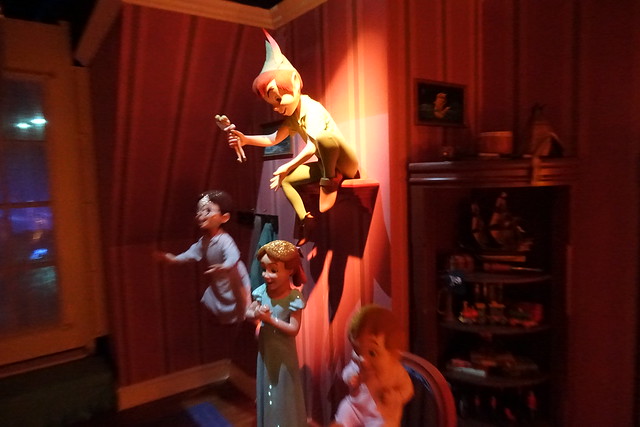
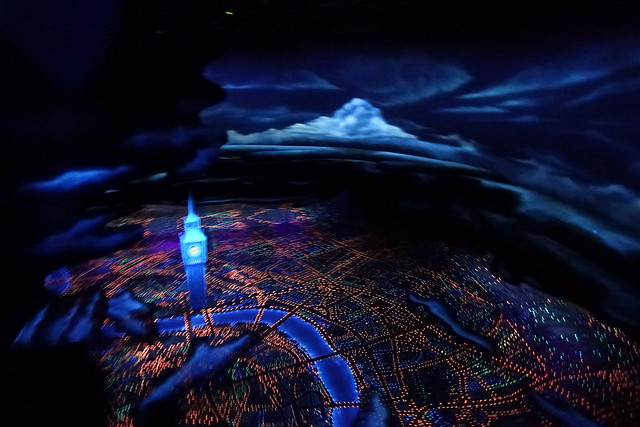
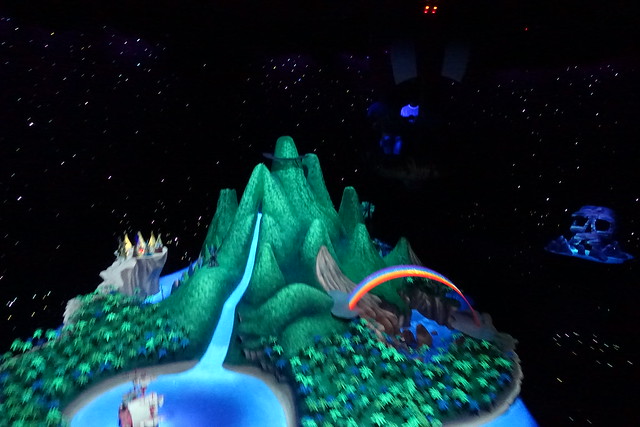

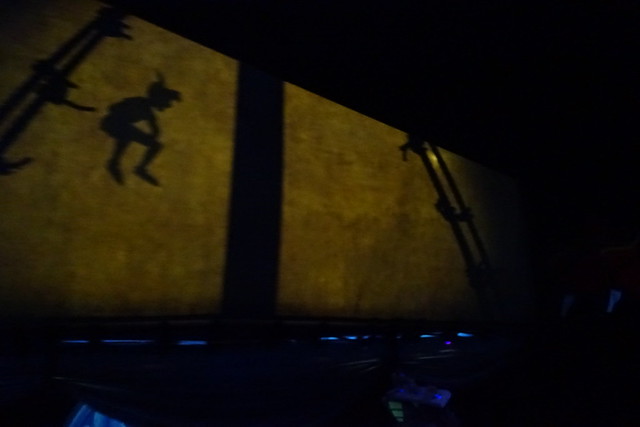
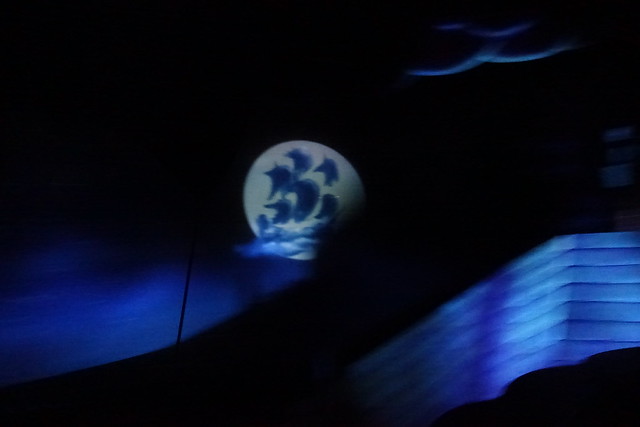
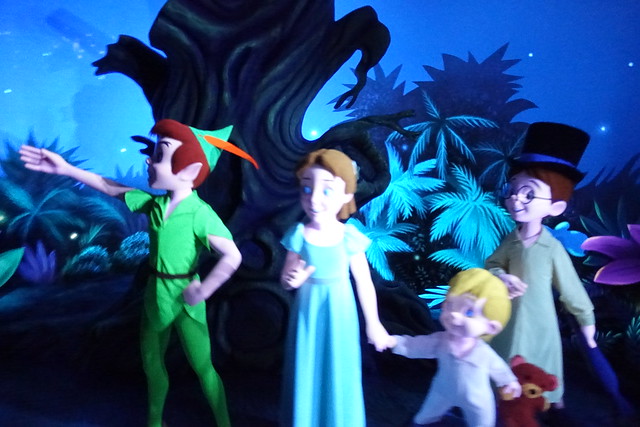
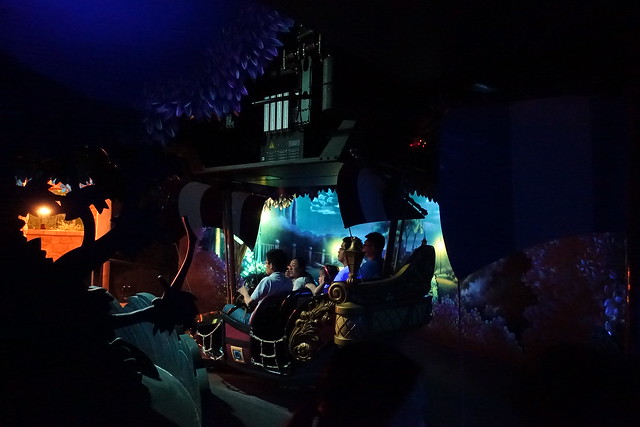
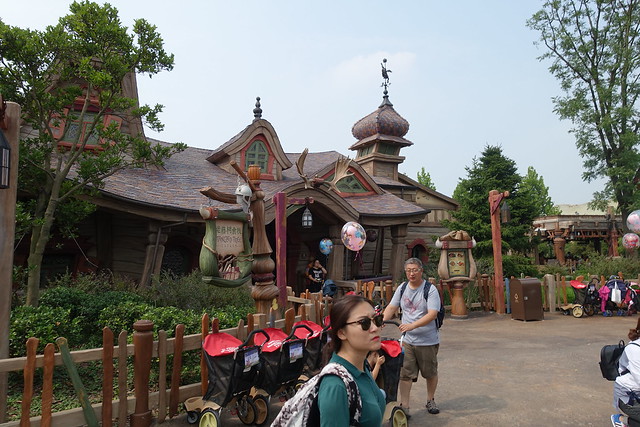
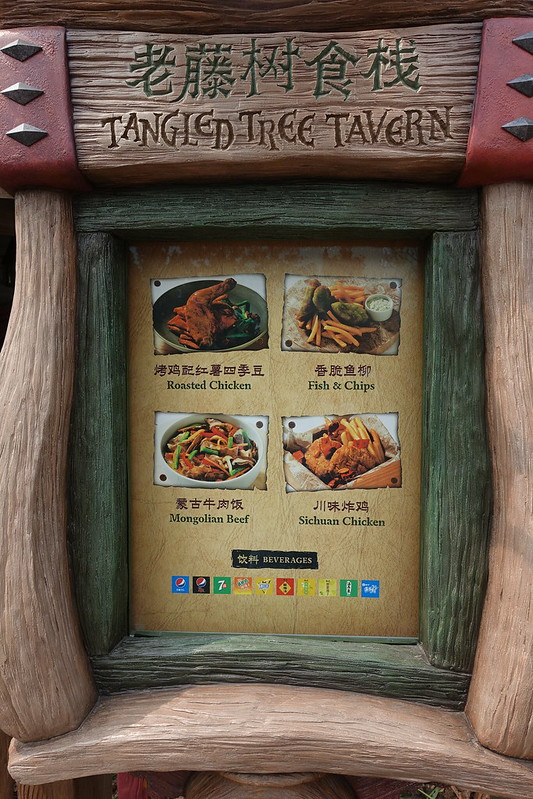
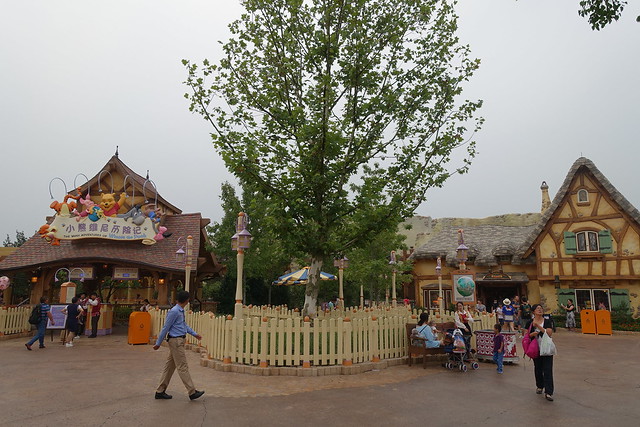
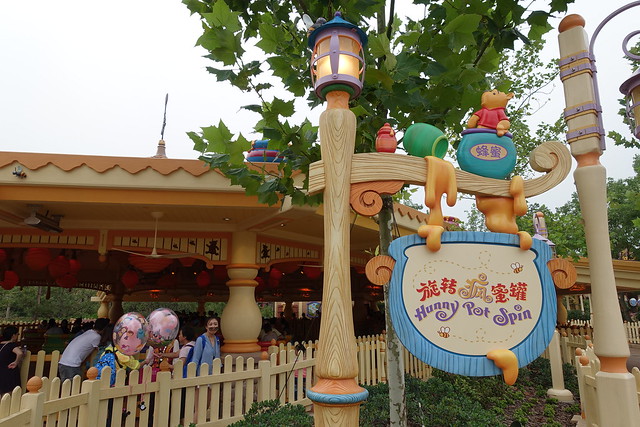
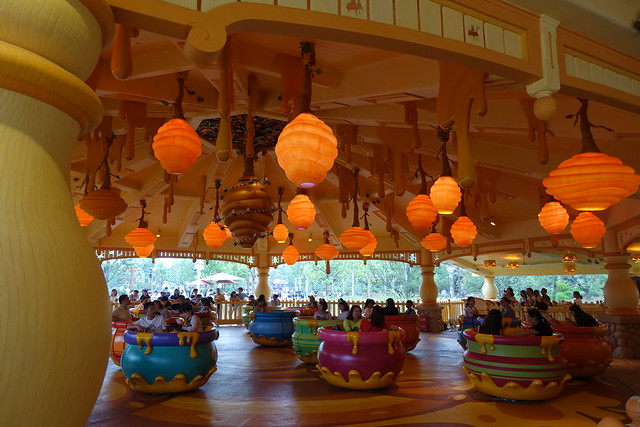
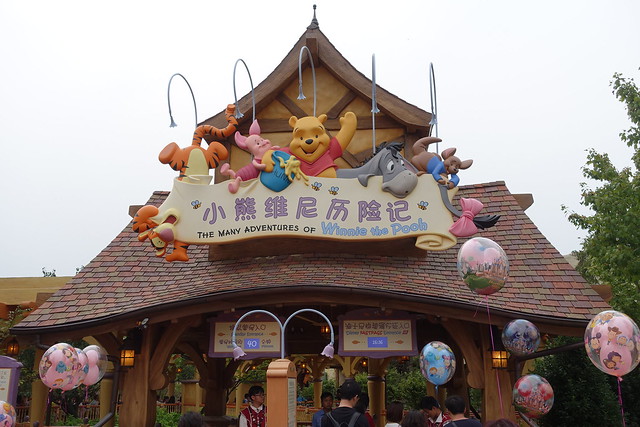
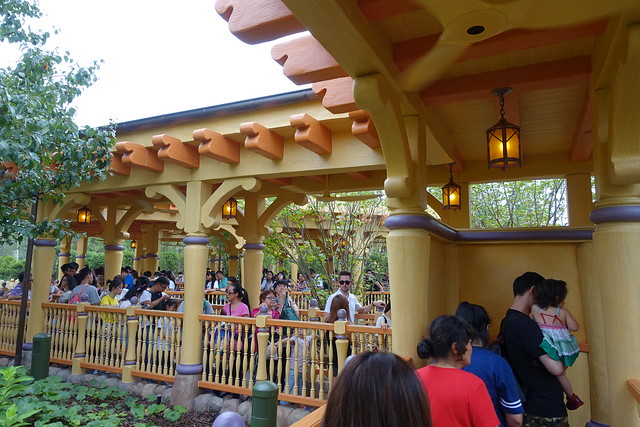
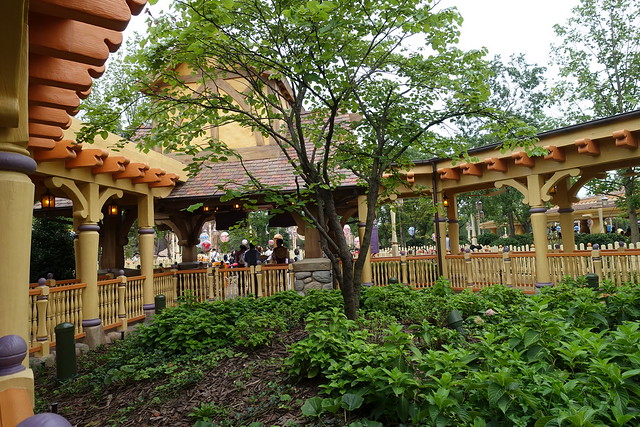

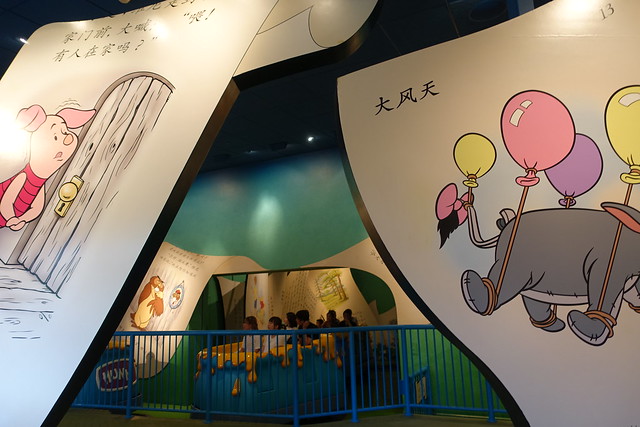
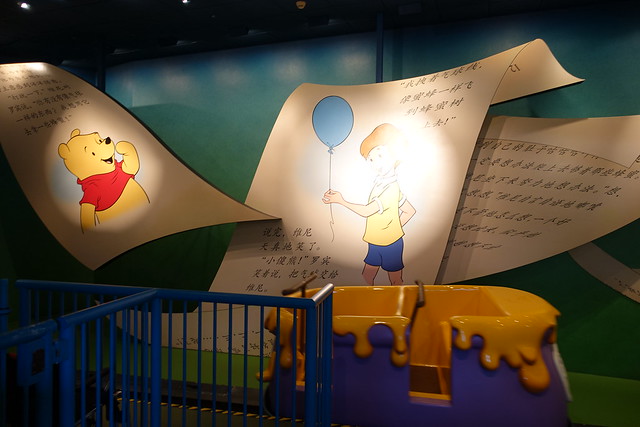
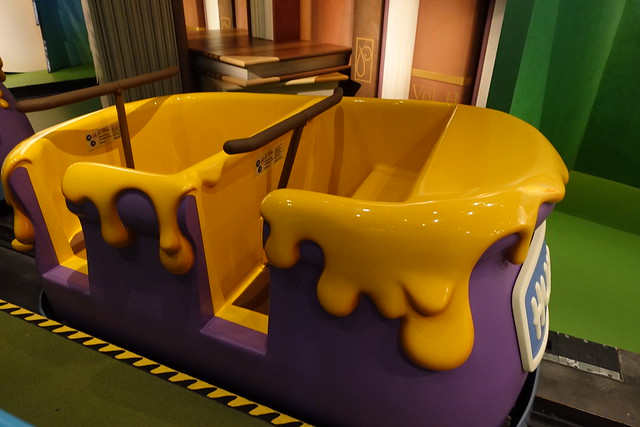
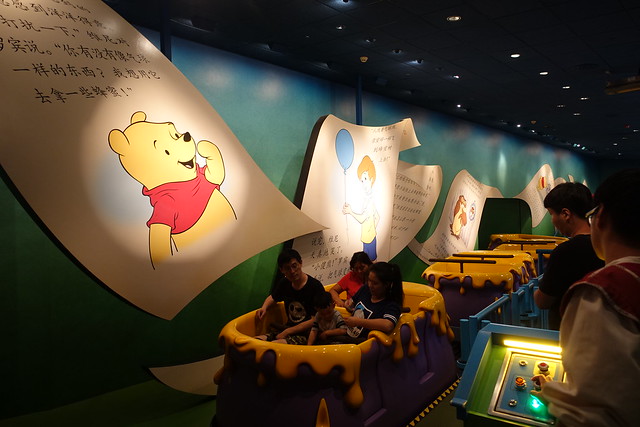
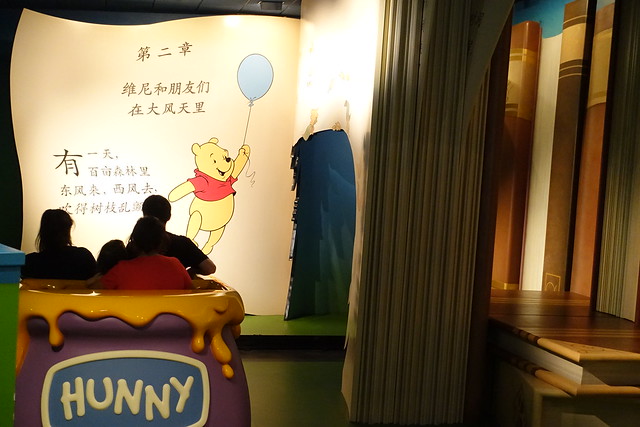
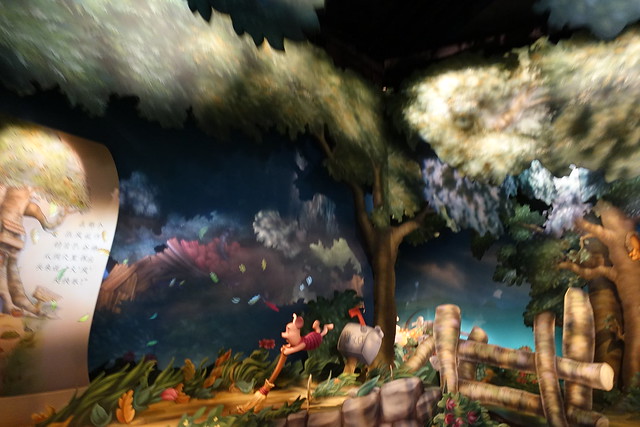
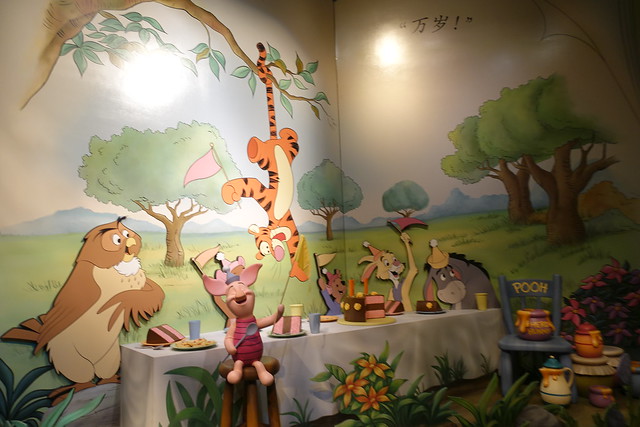
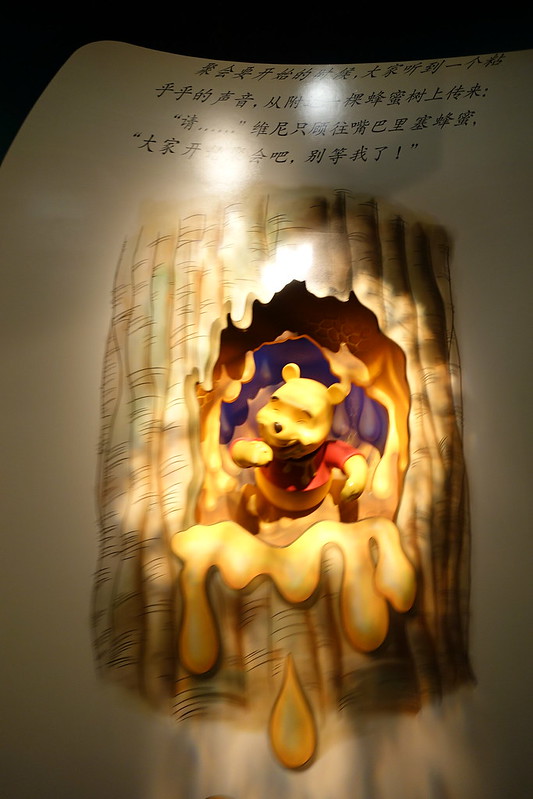
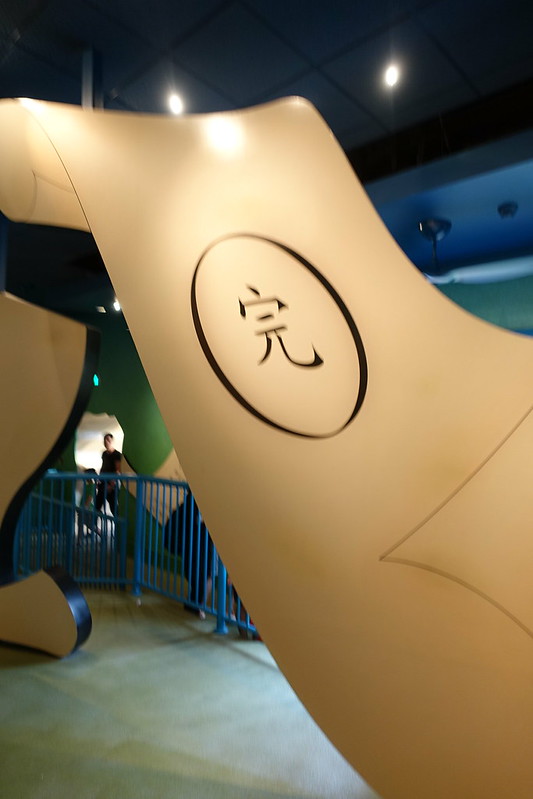
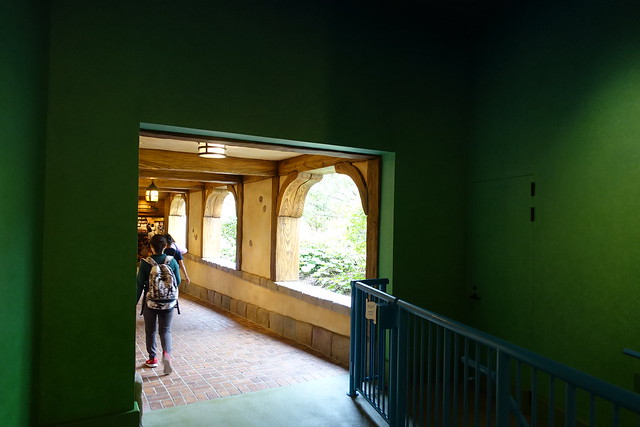
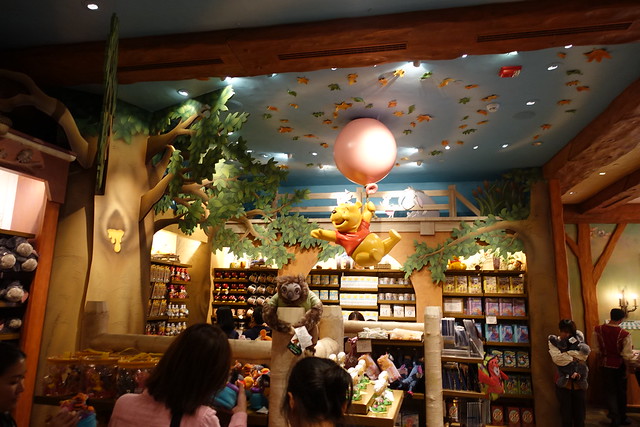
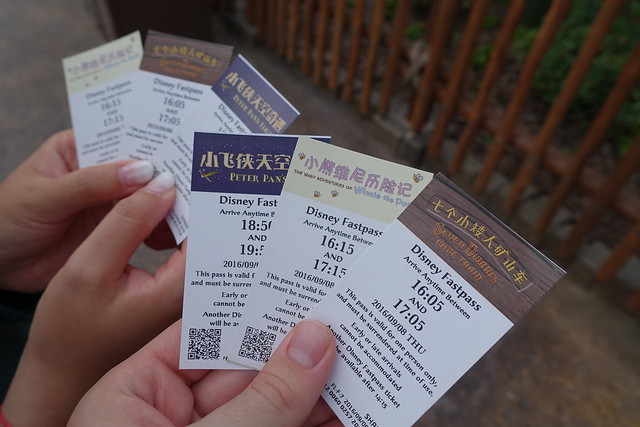
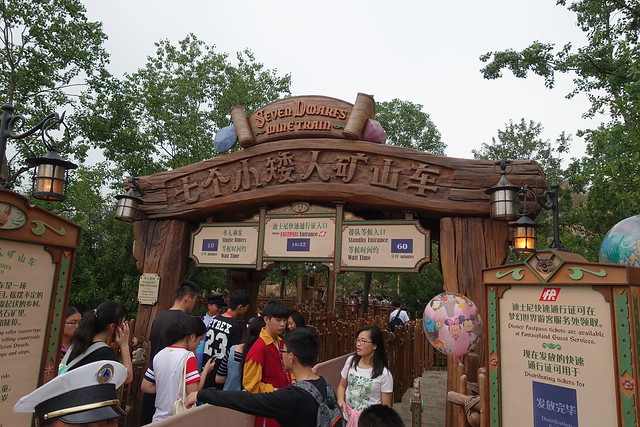
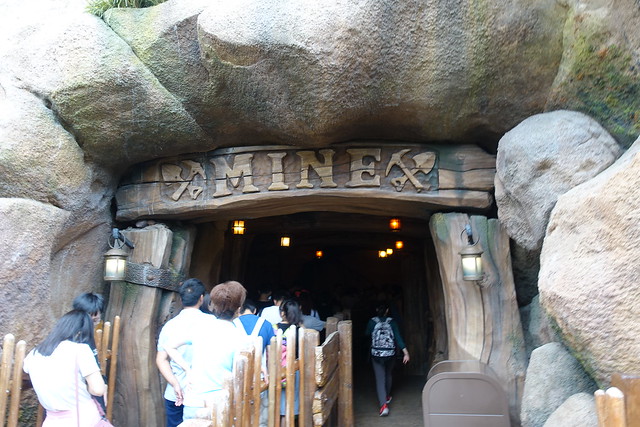
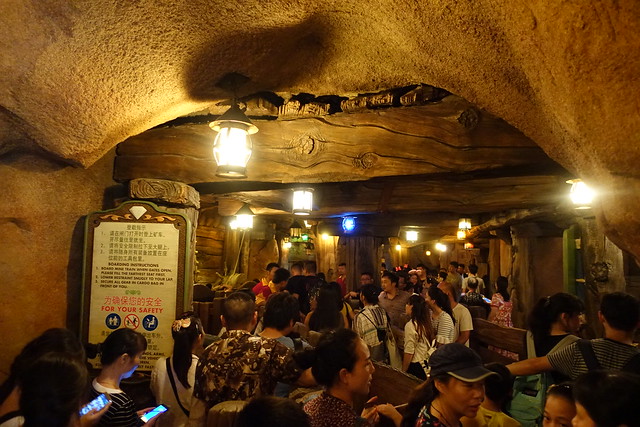
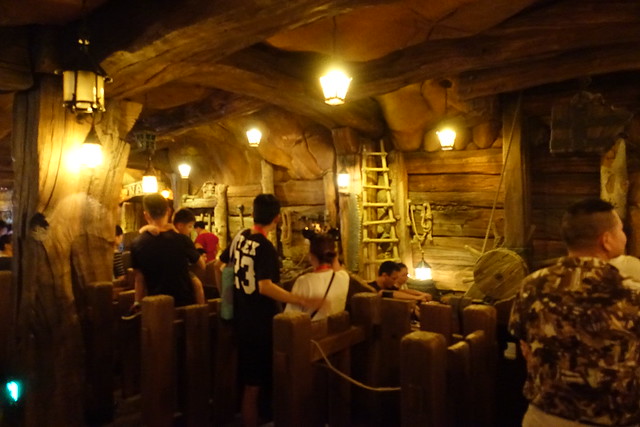
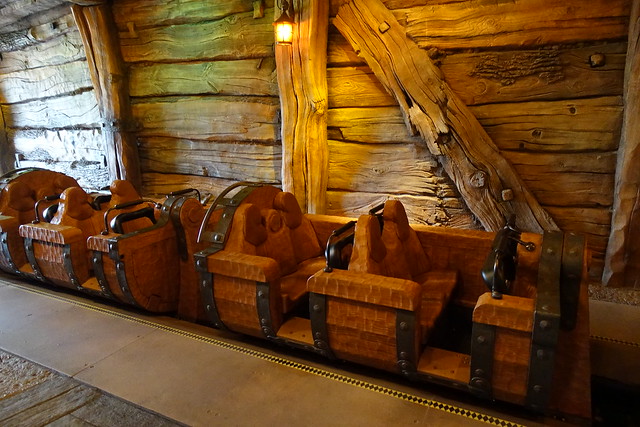
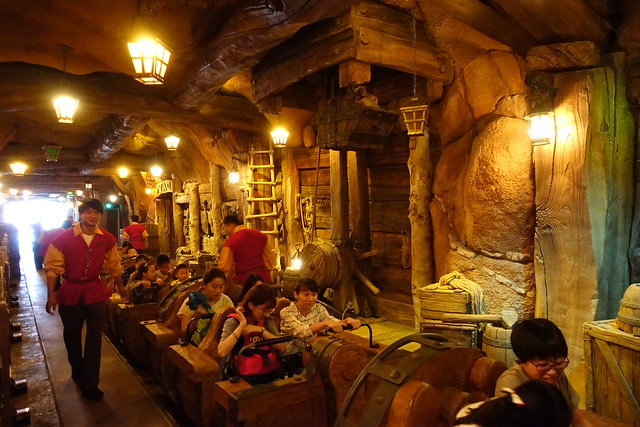

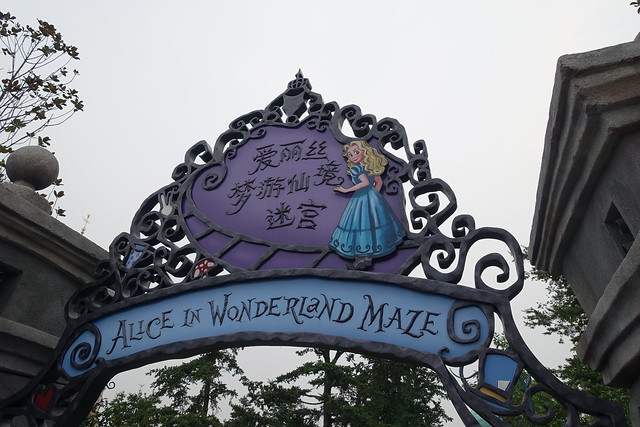
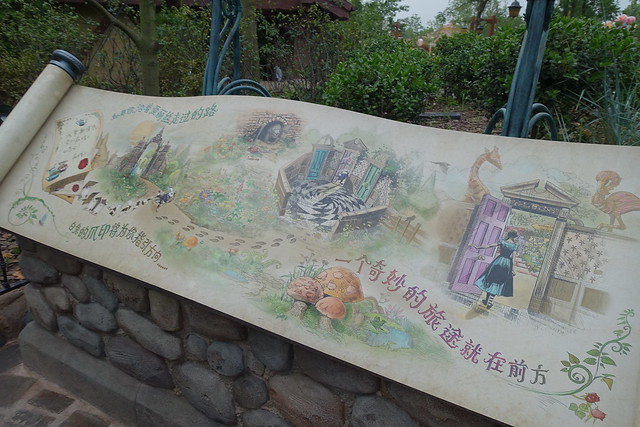
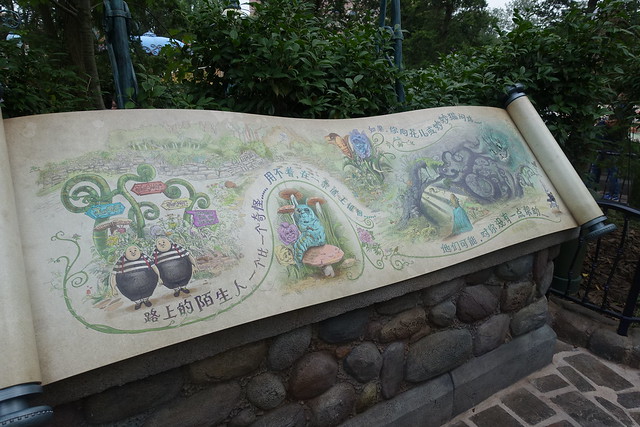
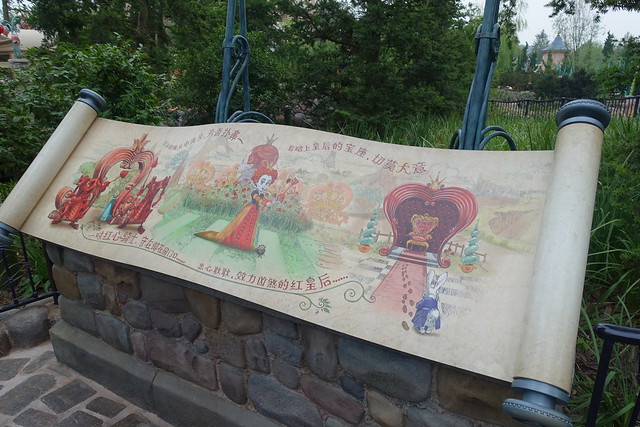
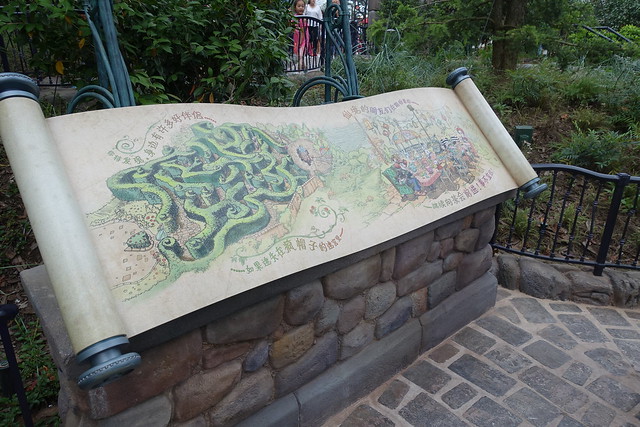
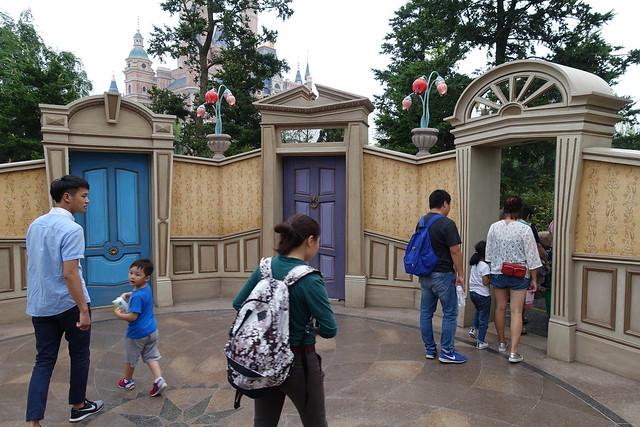
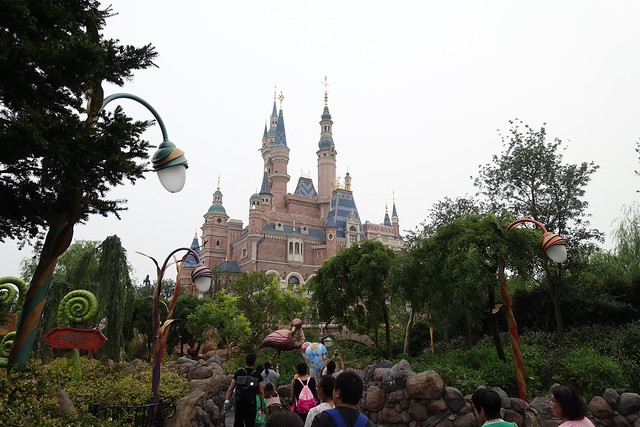
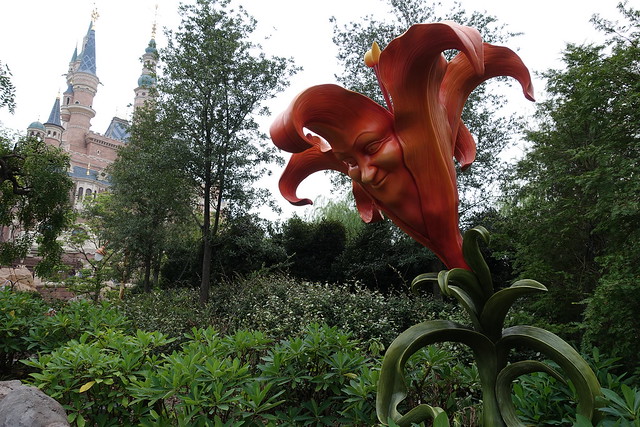
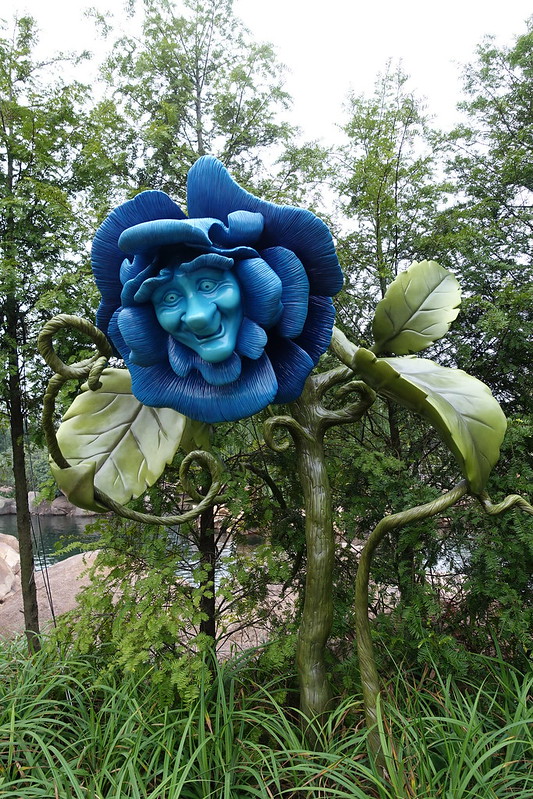
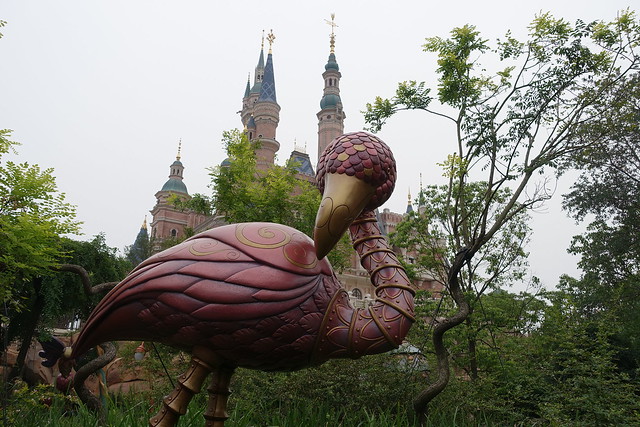
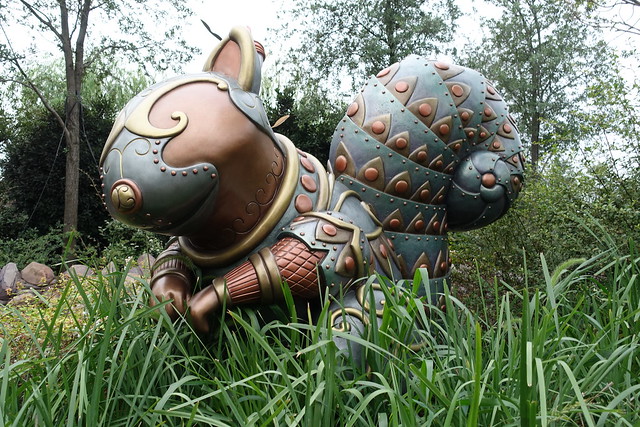
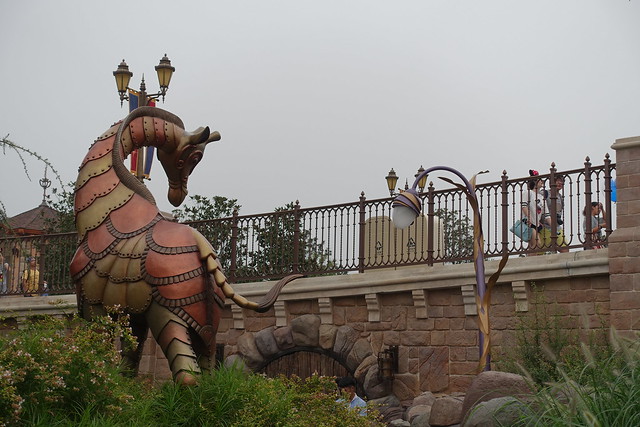
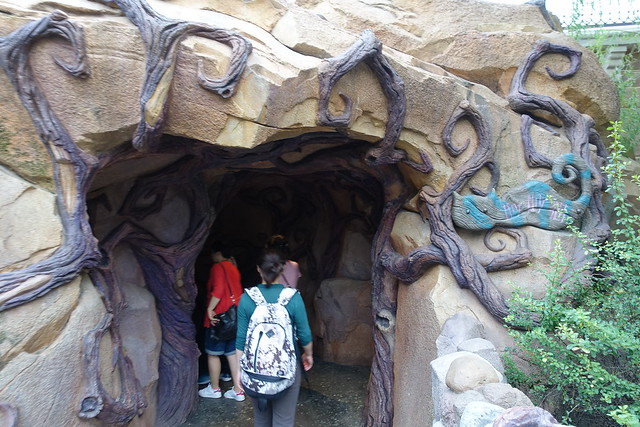
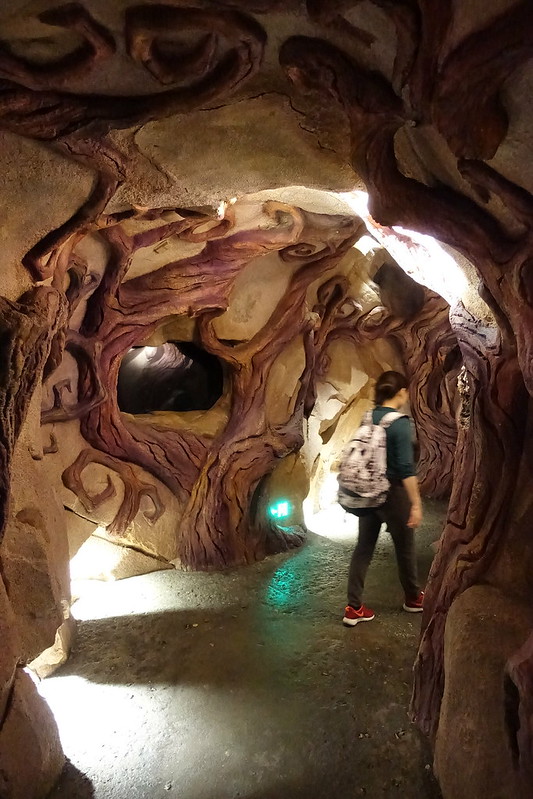
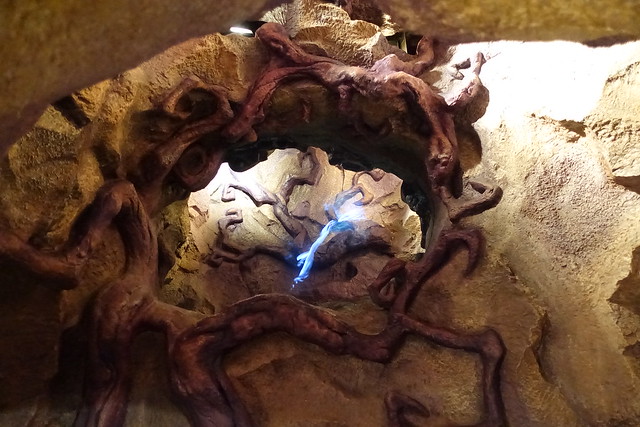
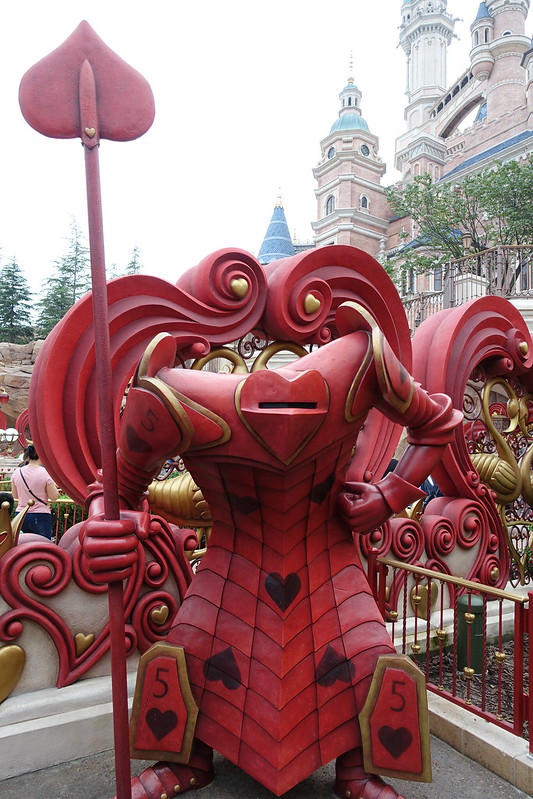
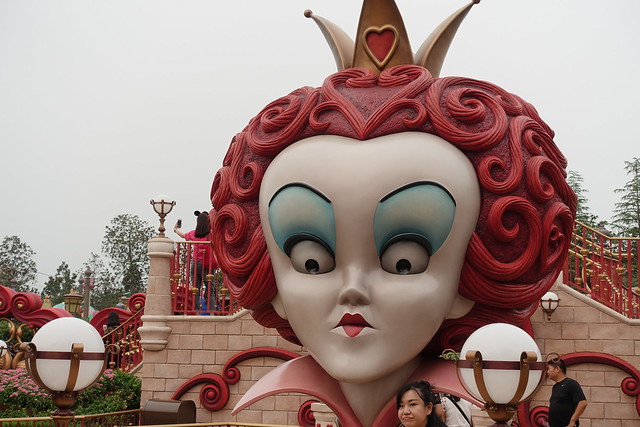
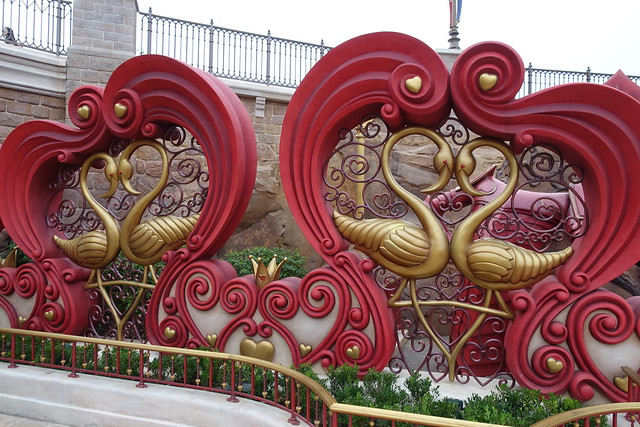
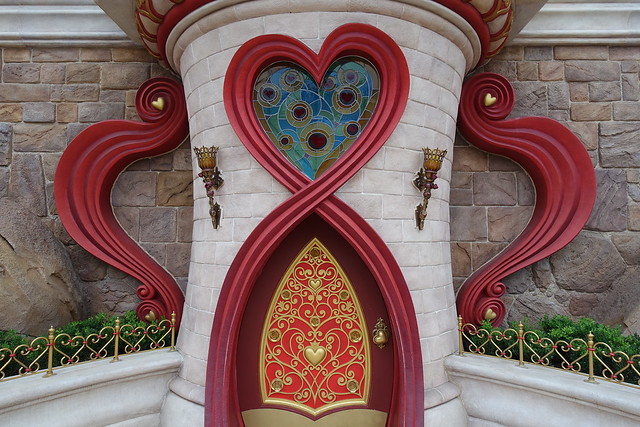
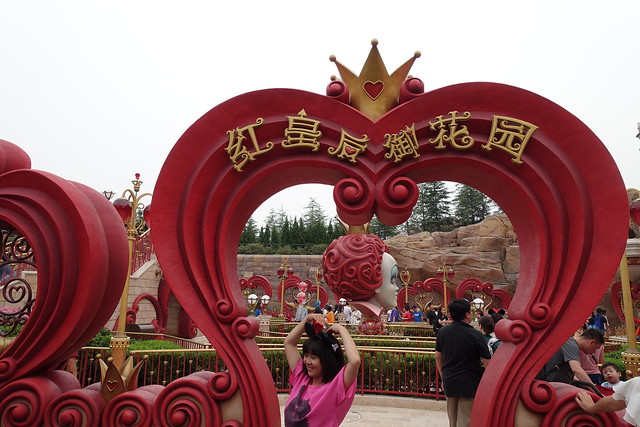
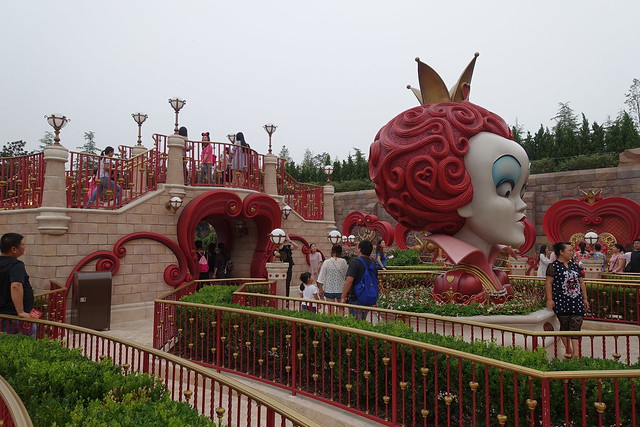
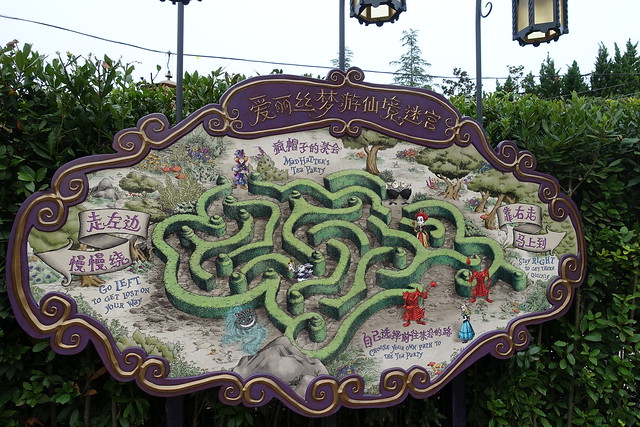
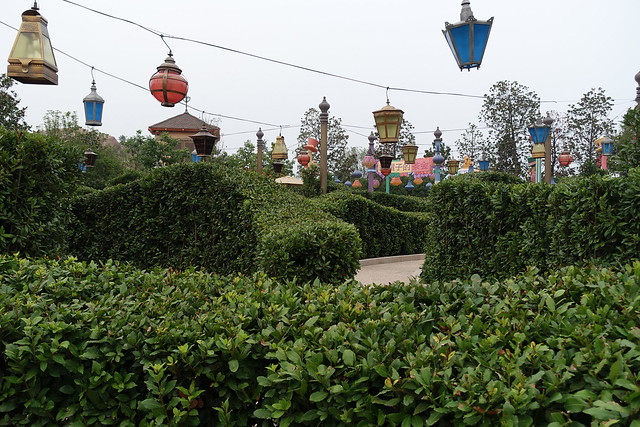
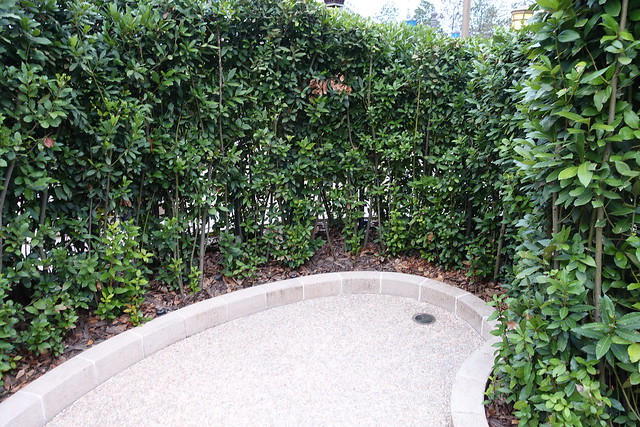
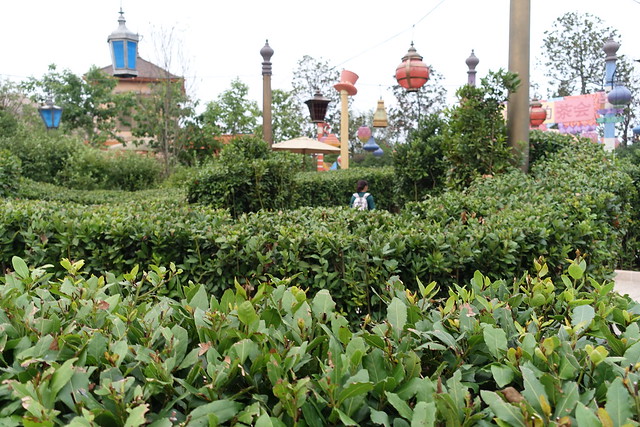
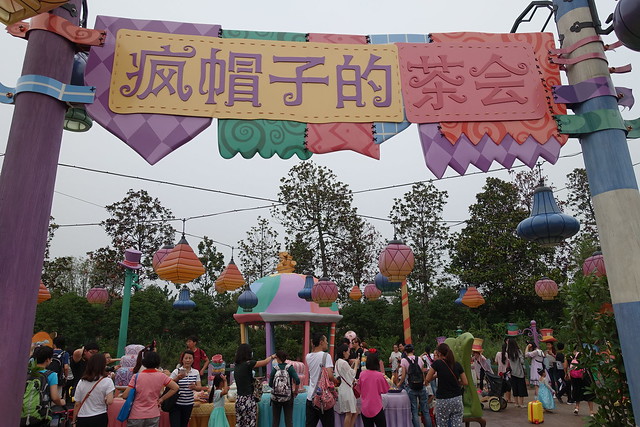

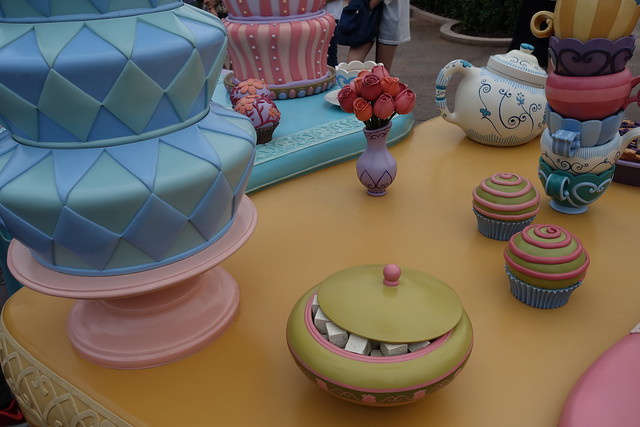
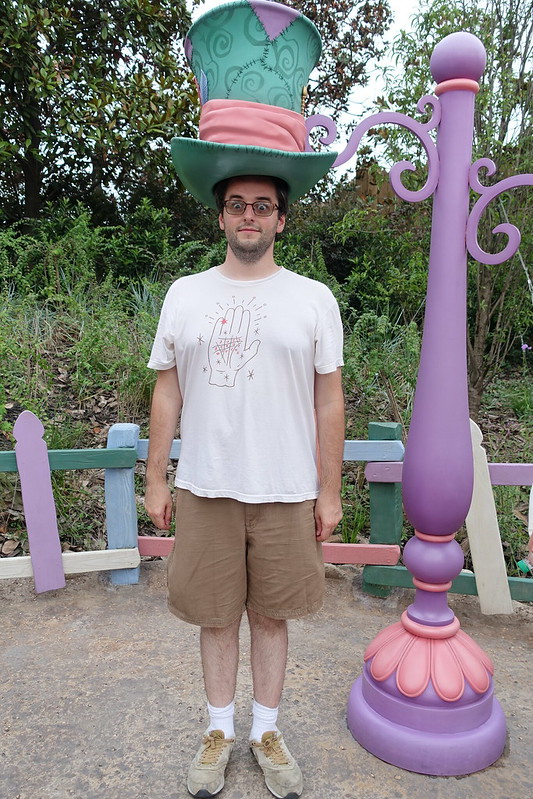
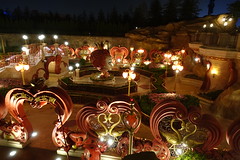
Footnotes & Annotations
[1] The choice to make this a “storybook” castle rather than pick just one princess to give it to is emblematic of a popular trend in contemporary theme park design to value collections and series over singular objects. This logic dictates: Why tell just one story when you can tell them all?!?
[2] Technically Buzz Lightyear can also claim that distinction, but it will soon be replaced by a Marvel attraction and Hong Kong Disneyland, tying it’s claim with Pooh’s. (This also assumes you count Tokyo’s version as the same ride. They all have the Heffalumps and Woozles scene, so I’m inclined to count them together.)
[3] When I first saw the video of the Magic Kingdom version, I was struck by this deliciously dark yet fleeting final image on an attraction that otherwise lacks any sense of danger or threat, and imagined this ride acting as a prequel for the classic Snow White’s Scary Adventures dark ride, an attraction that’s almost comical for its unrelenting bleakness for a Disney family ride. Sadly, I doubt we’ll ever see both attractions in the same park, and I’m disappointed that final scene was the one casualty I’d miss in the ride’s transition to China.
Hi, just catching up on these great reviews. I largely agree with most of your points. I have a few minor notes though.
– Paris doesn’t have a Winnie the Pooh ride, you suggest all resorts have one.
– Once upon a time opened with the park, or at least it was open by day 3/4 when I was there.
– The doors in the maze seemed to change for each group. I think it’s to change up the flow of the guests entering to stop any bottlenecking.
A bit jealous those massive queuelines looked so empty on your visit, they were all full on my visit. I appreciated the cover and breeze they provided in the crazy heat.
Hi John, thanks for the notes! Ah, you’re right about Pooh, I don’t know why I blanked on Paris while considering the list. I guess that makes Buzz Lightyear the one ubiquitous attraction? (For now, at least.) I thought I remembered seeing a bunch of reports around opening and none of them featured Once Upon A Time, and was pretty sure one of them said it wasn’t open yet. Came across nothing until I visited for myself in September. I guess all the major trip reports were done in the first two days, and it must have just opened on your visit by the third day.